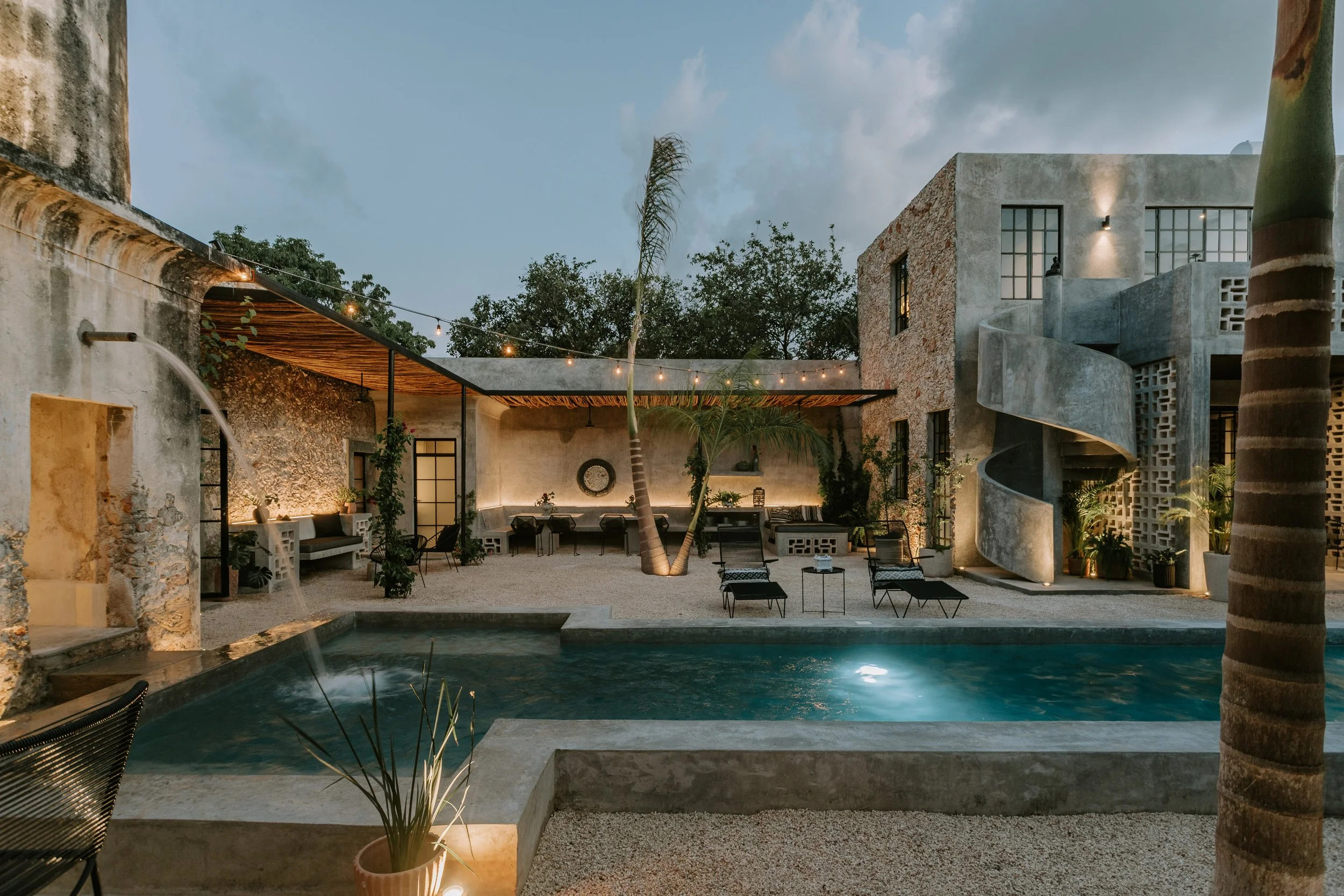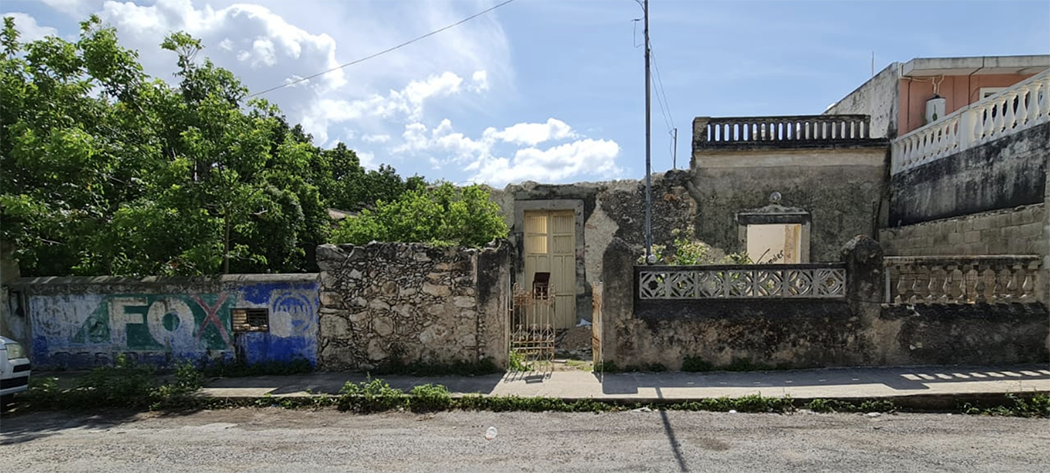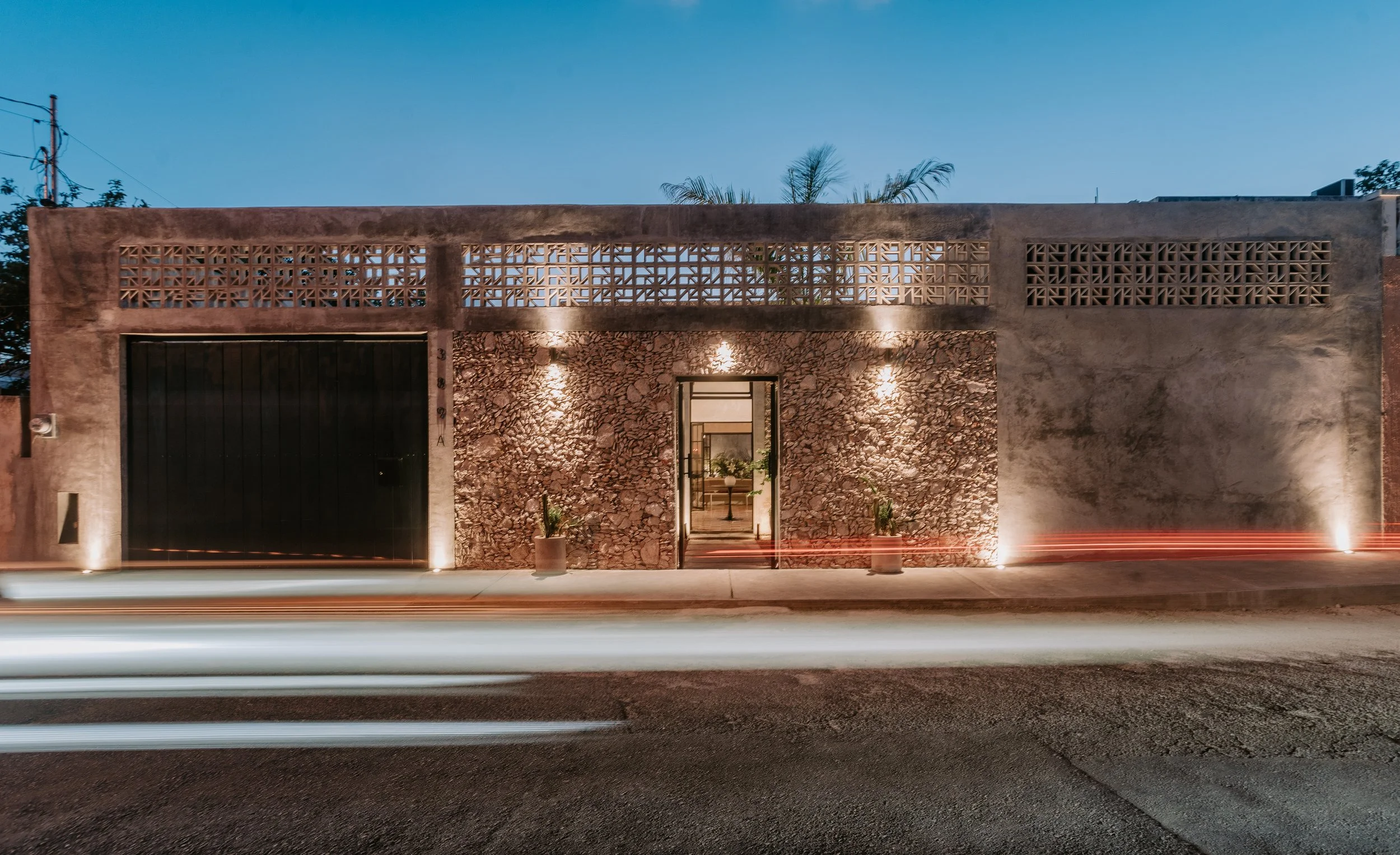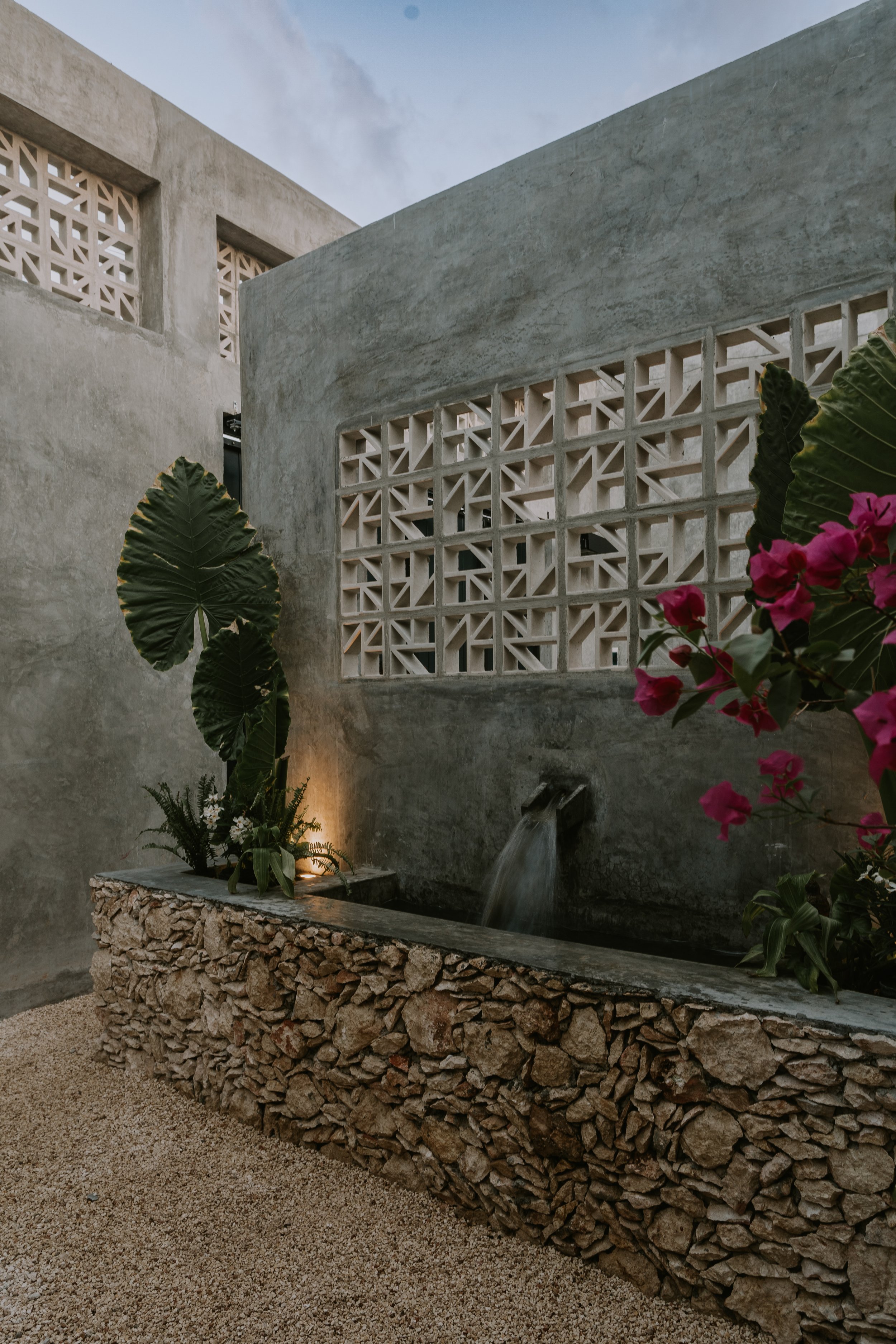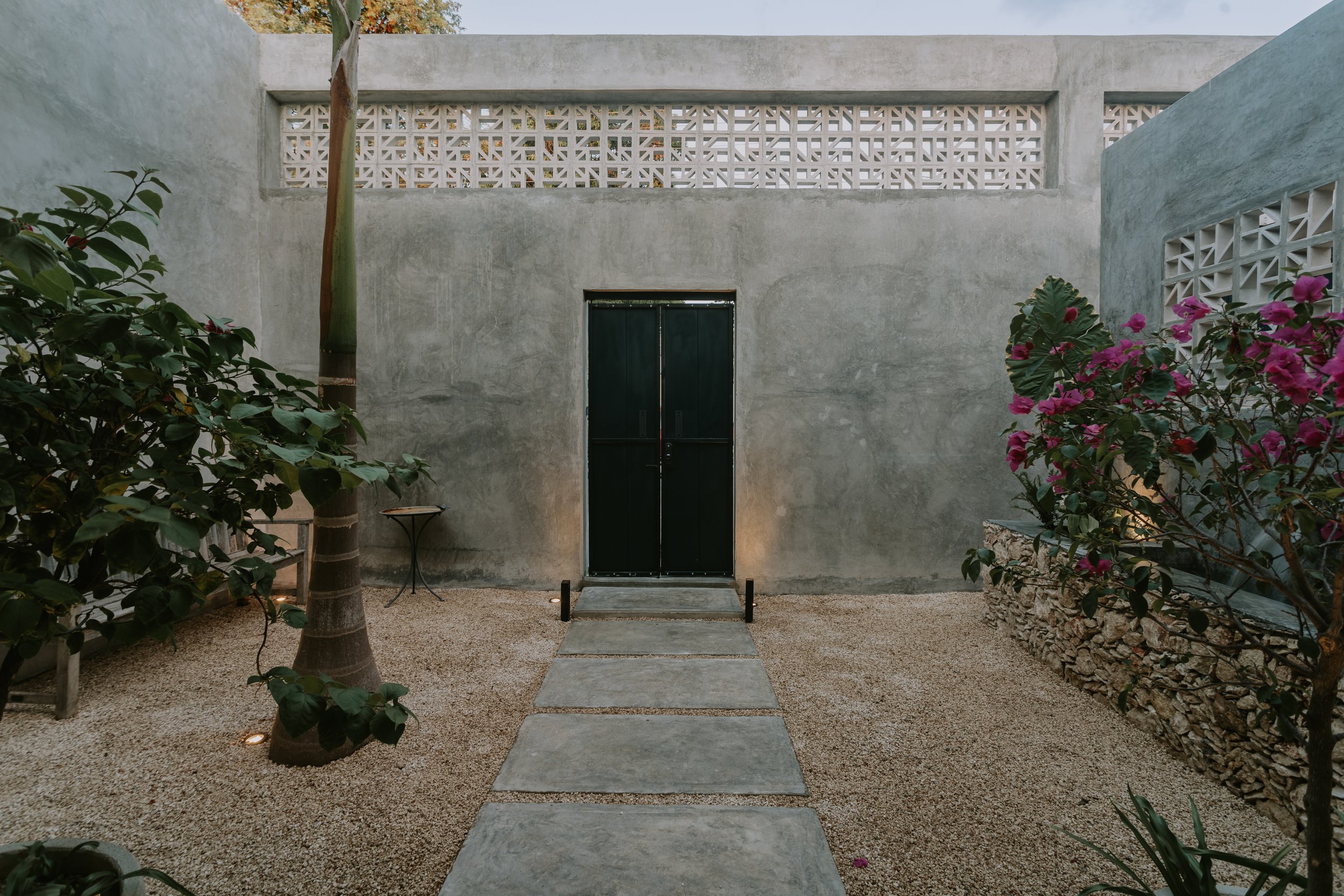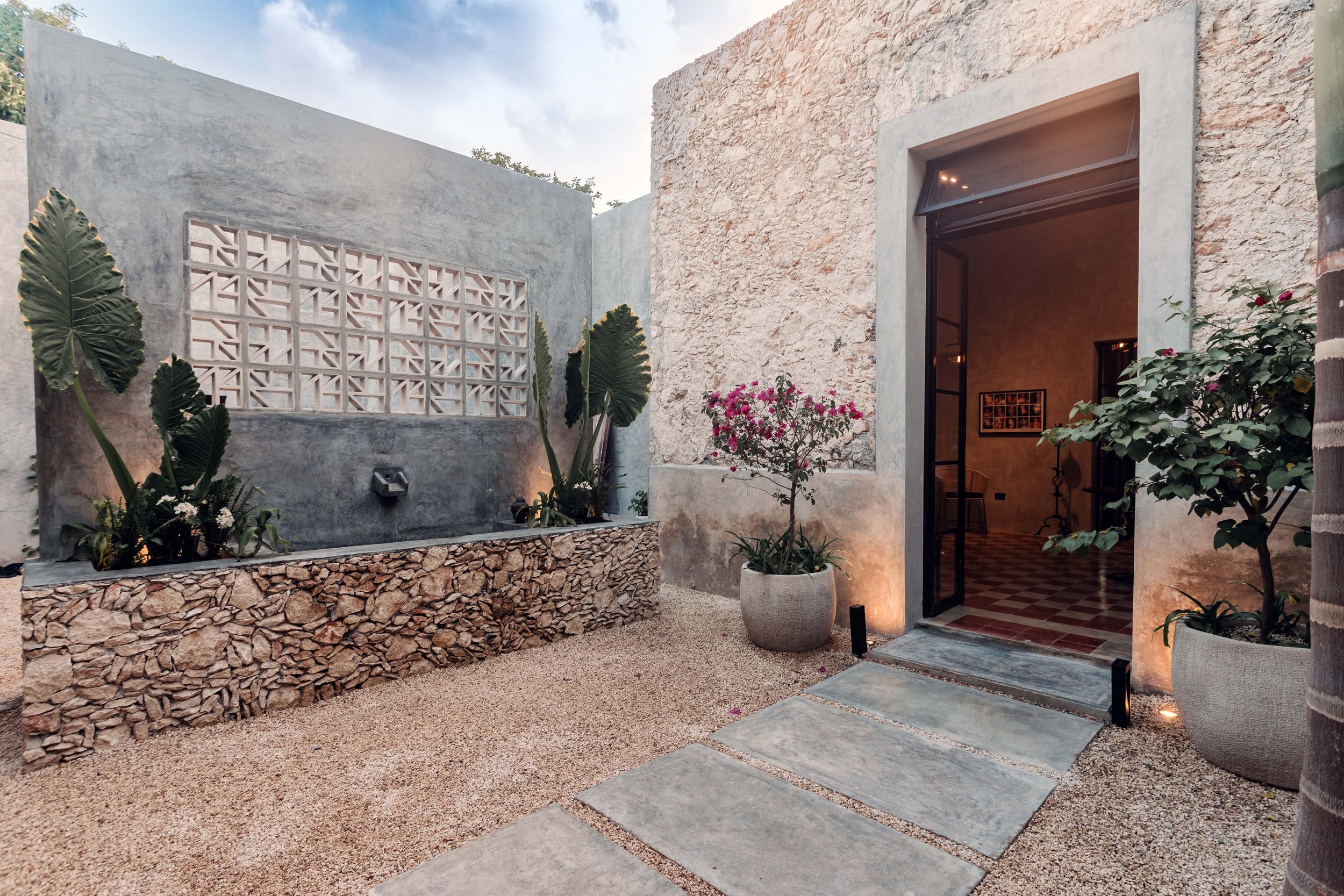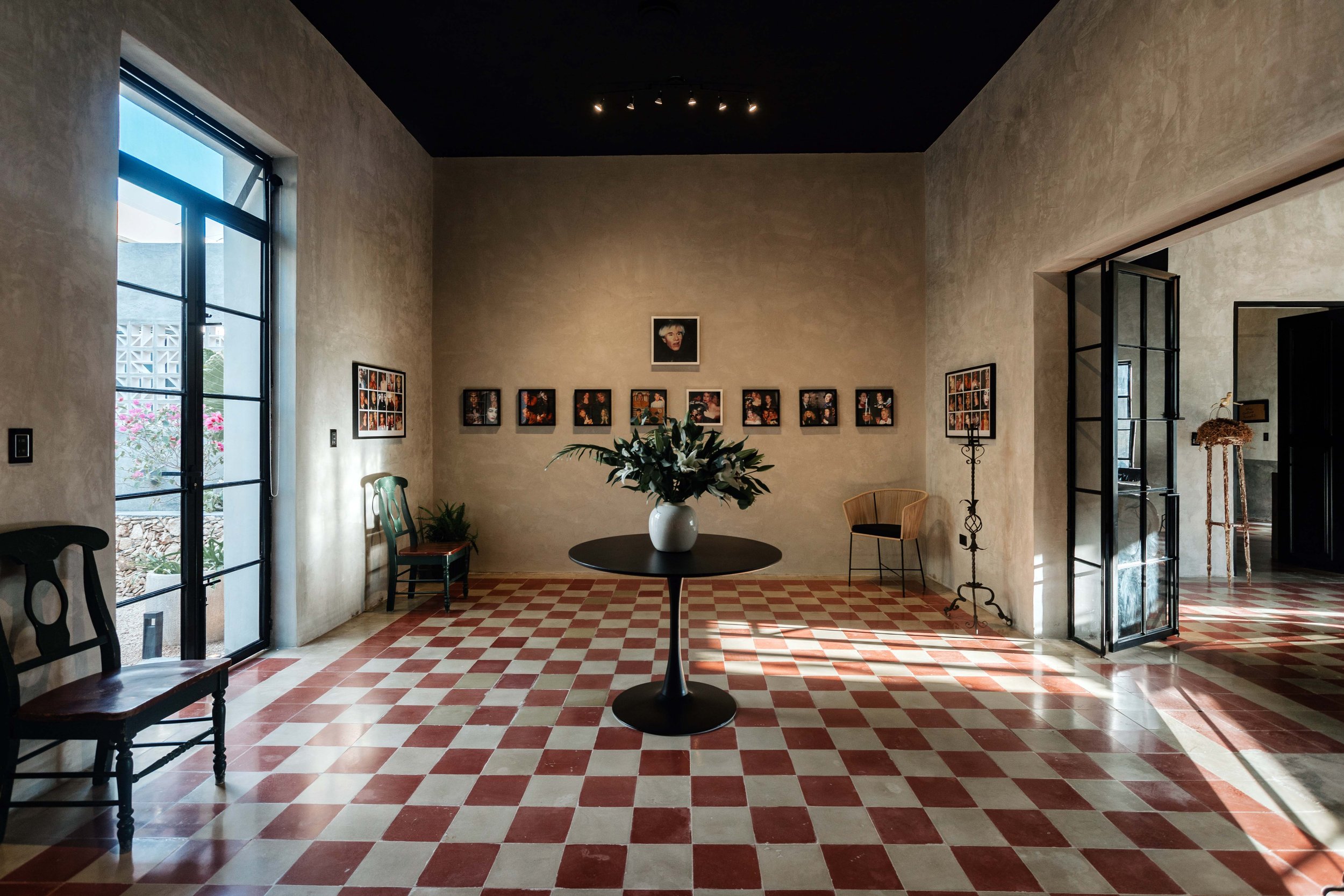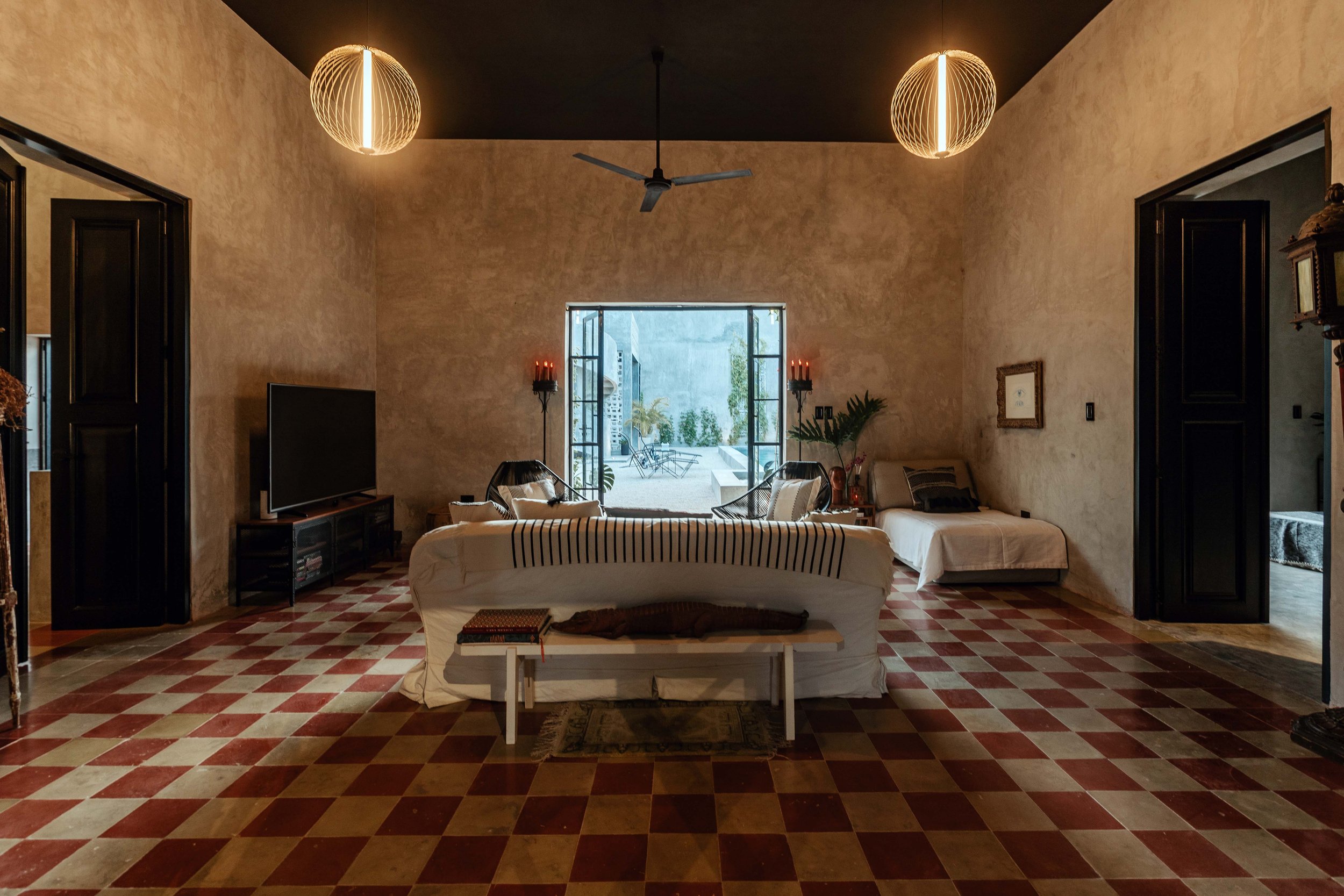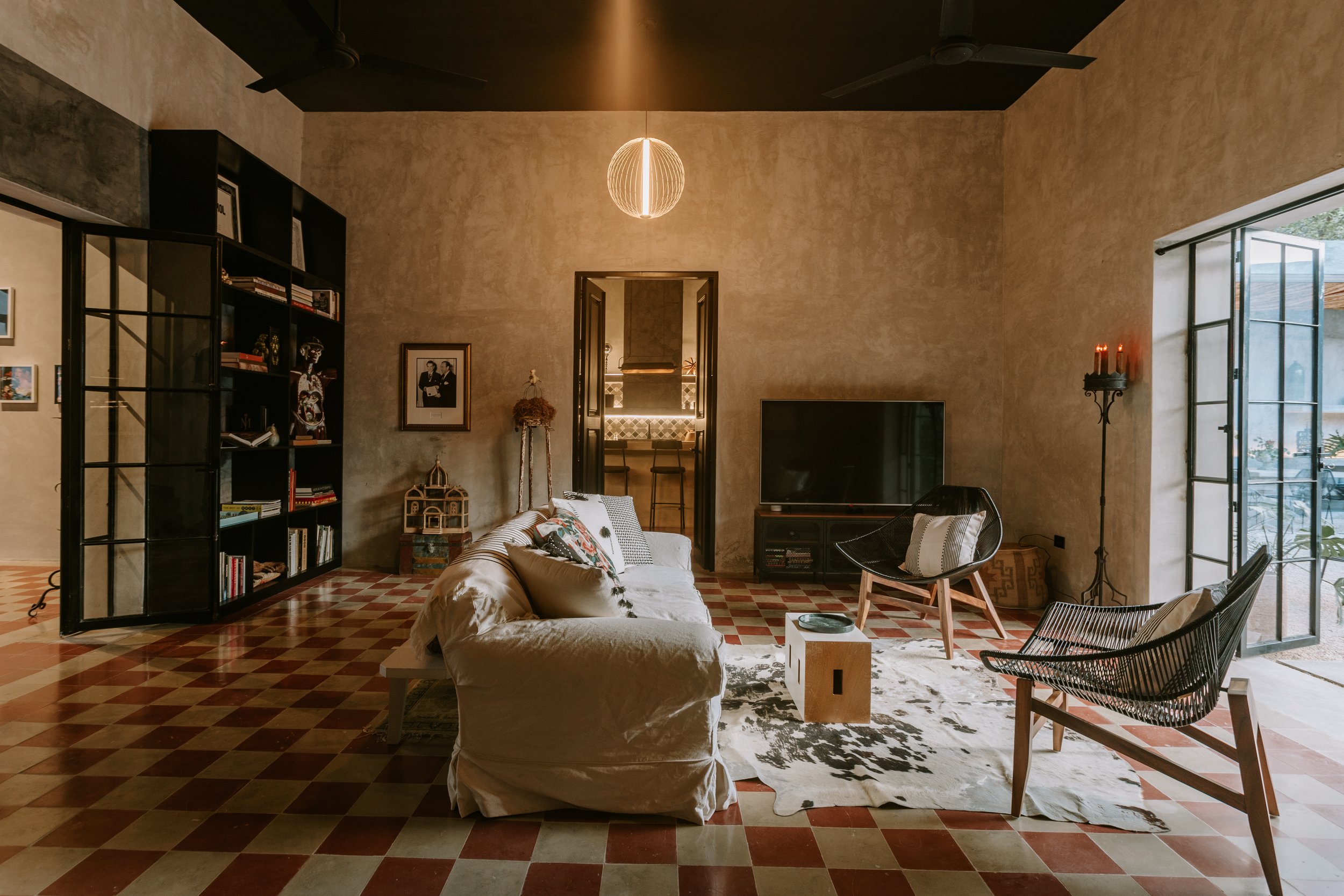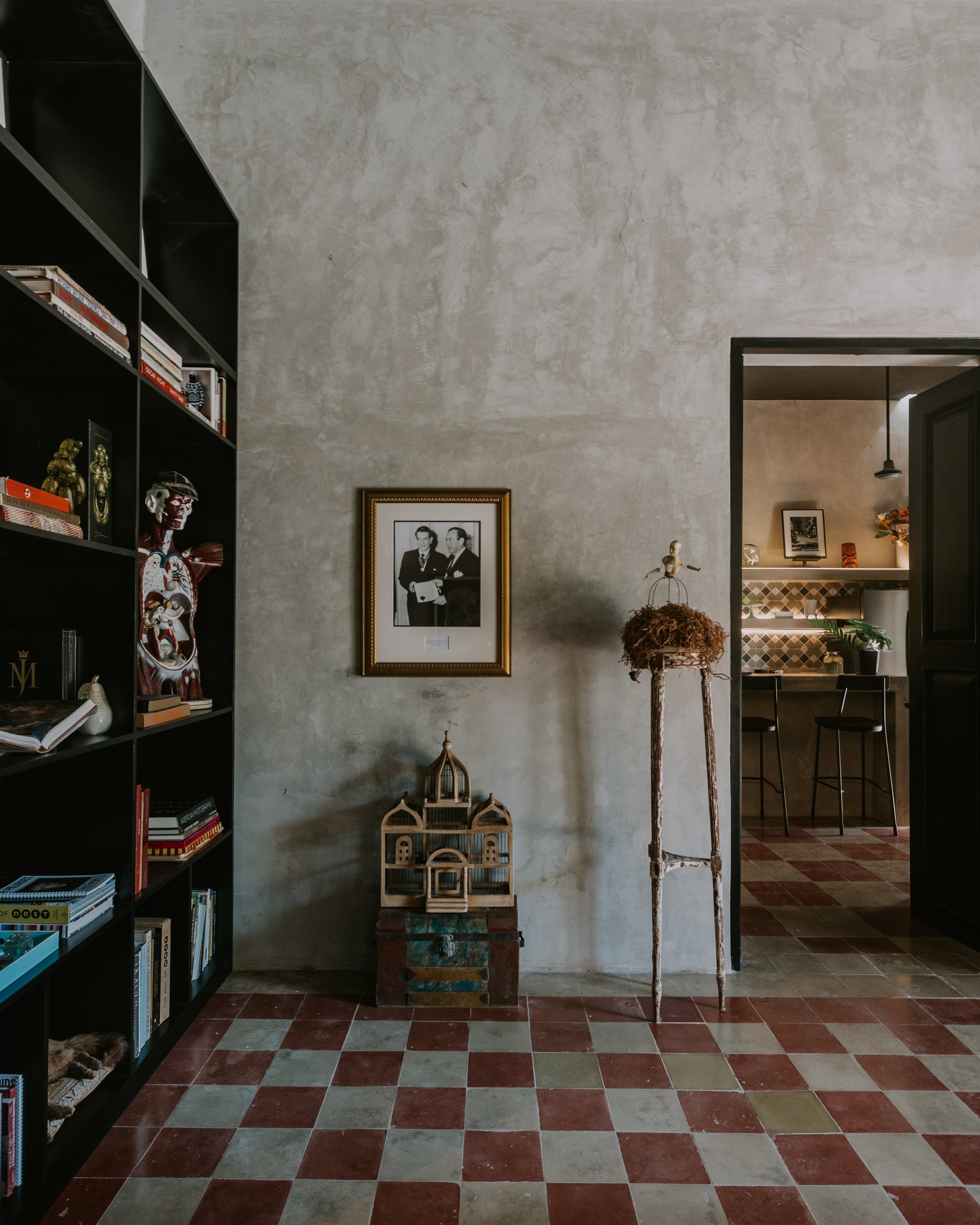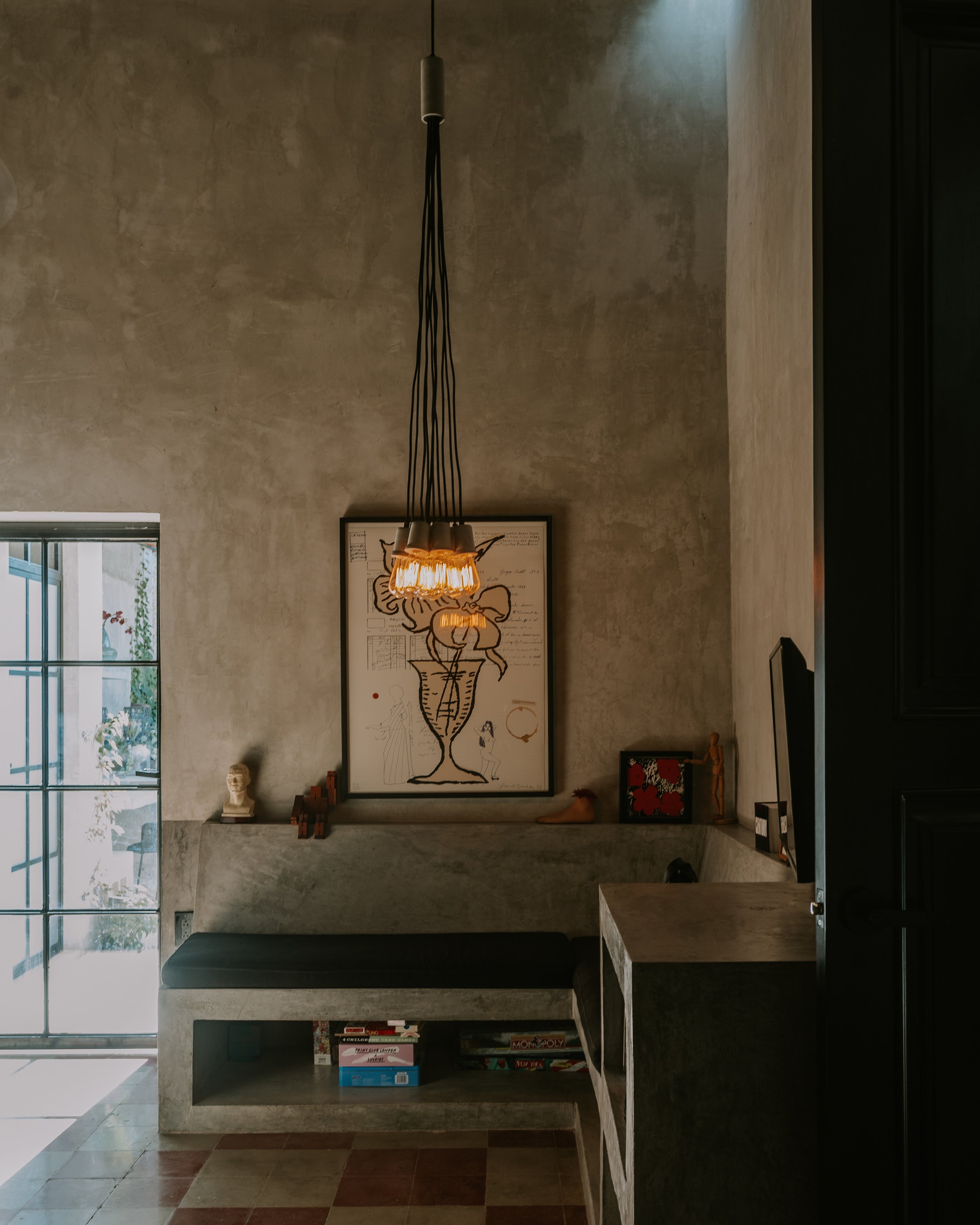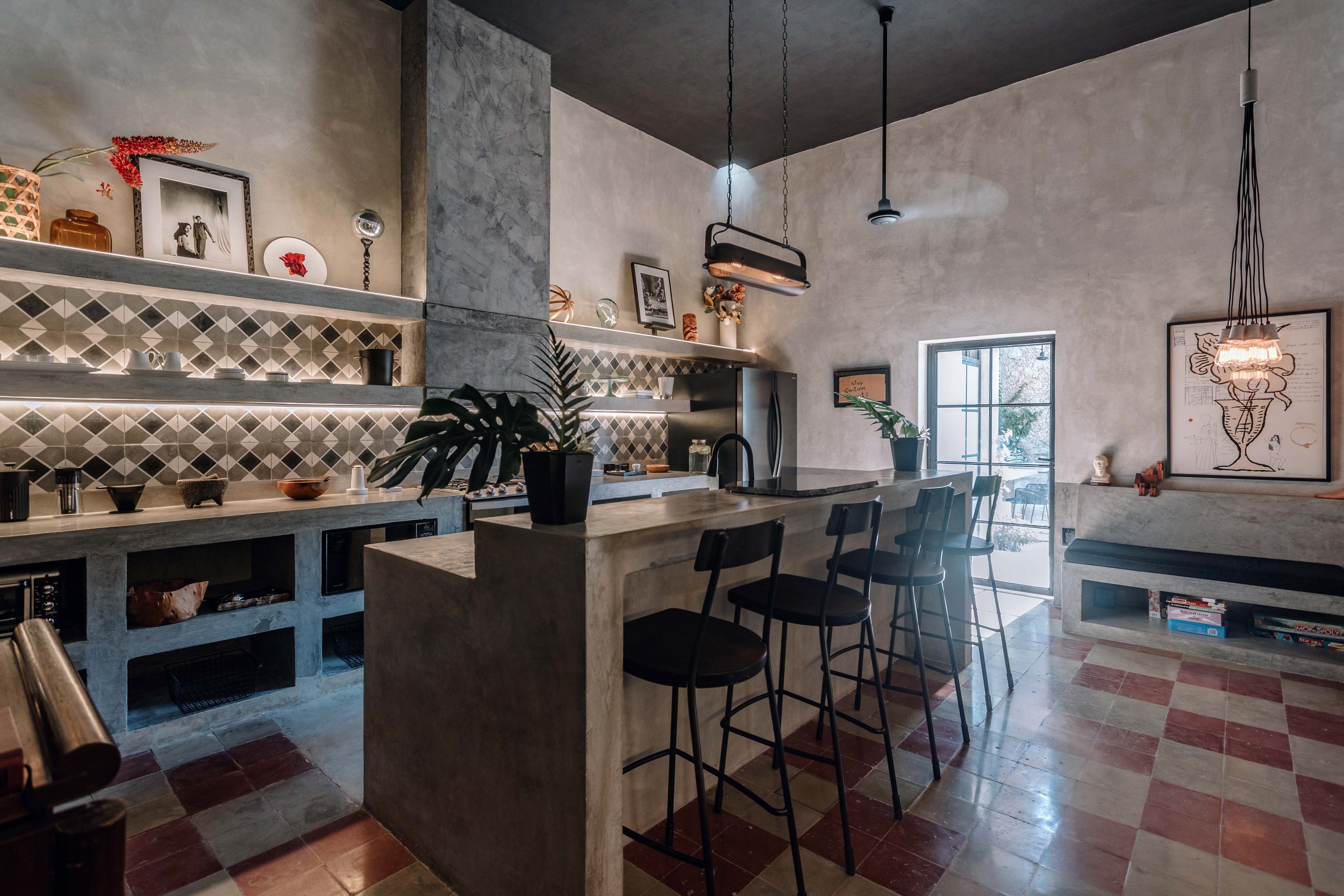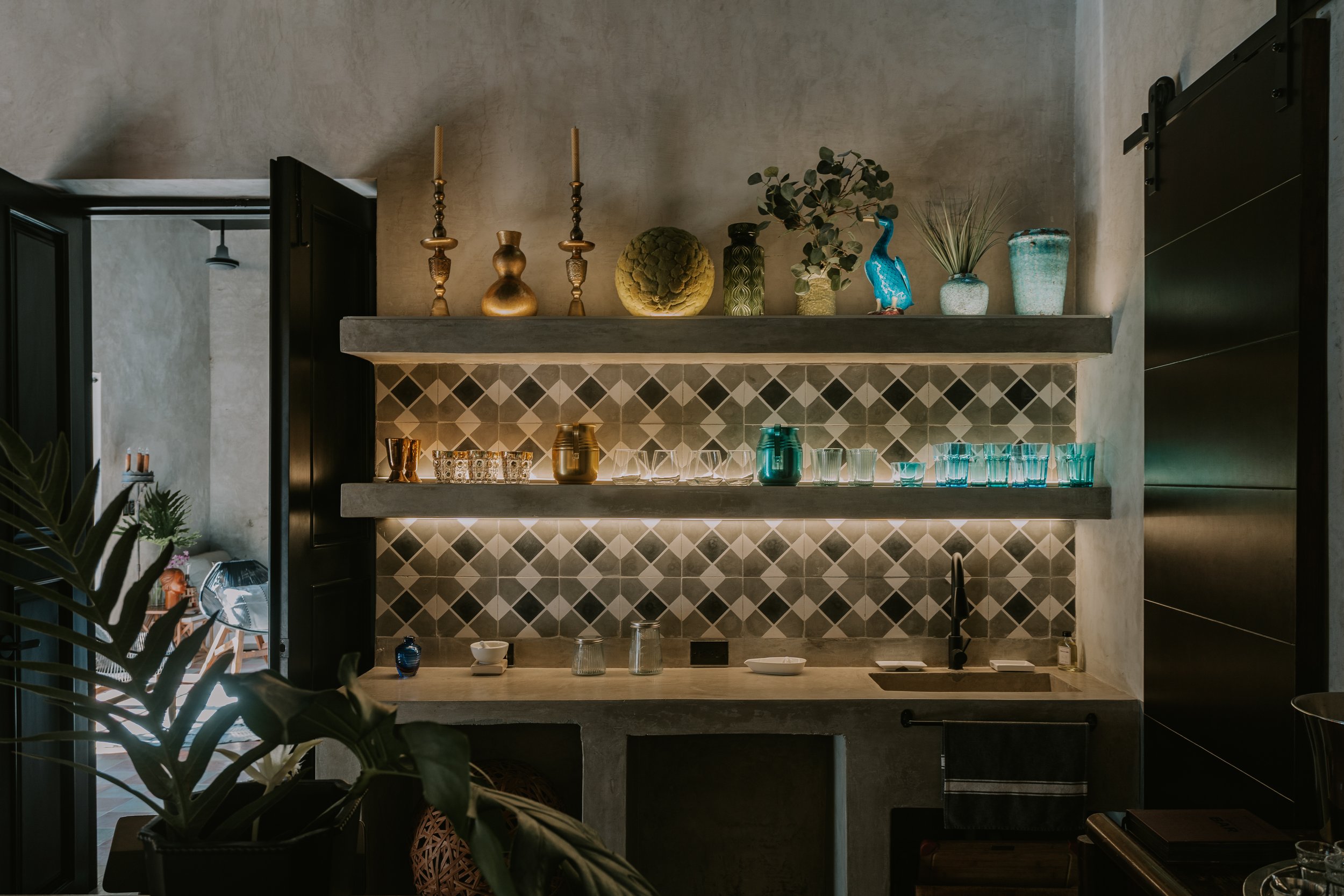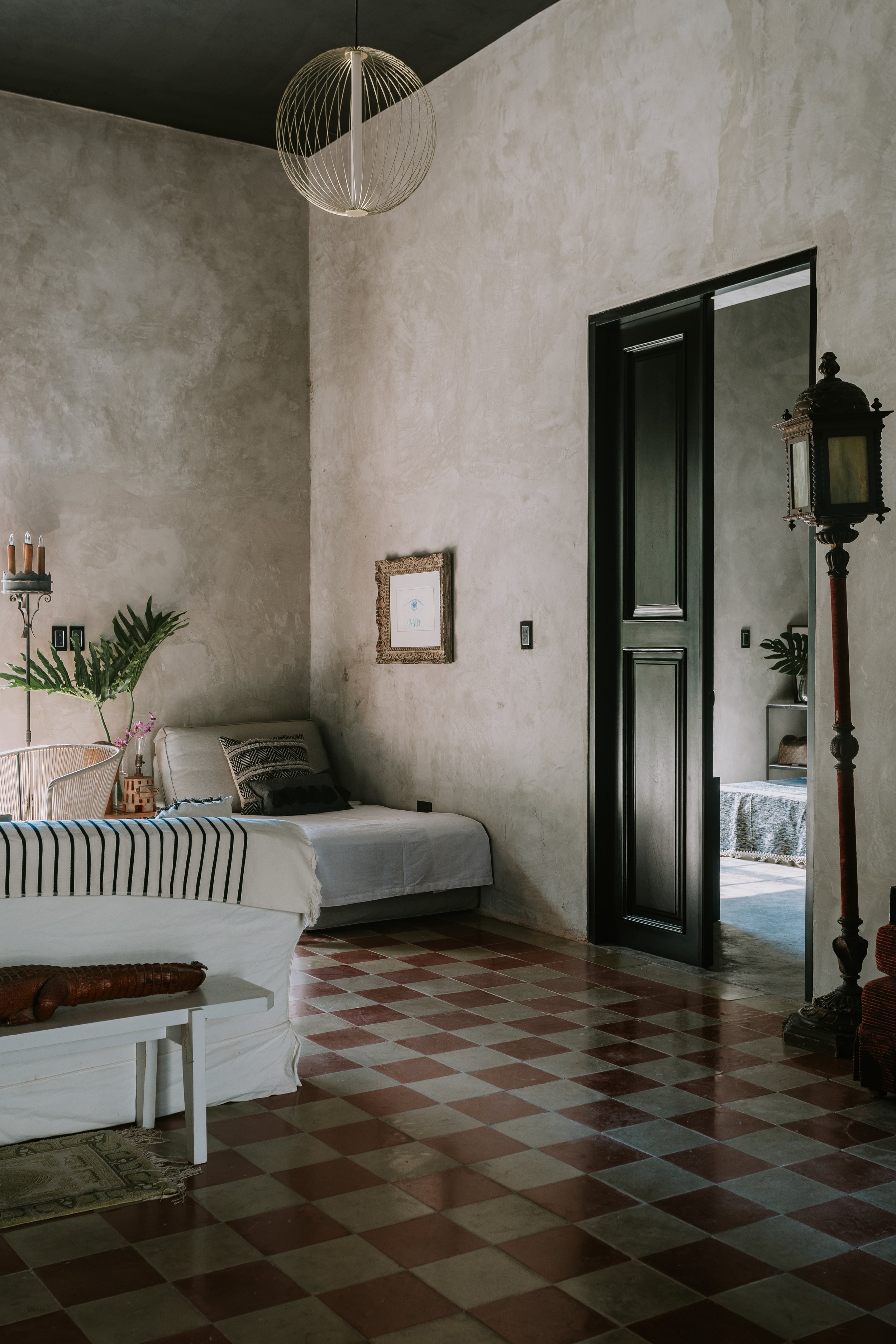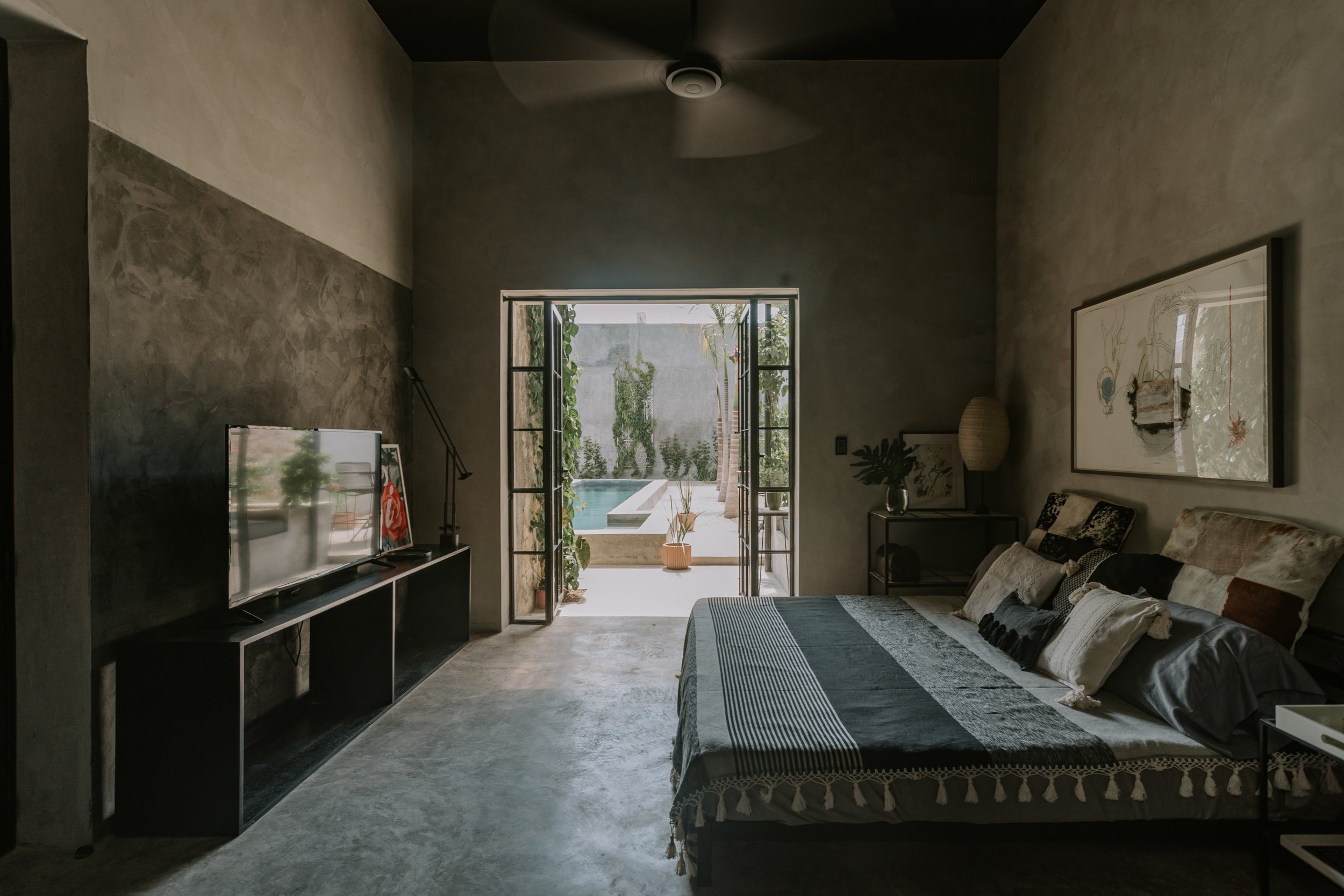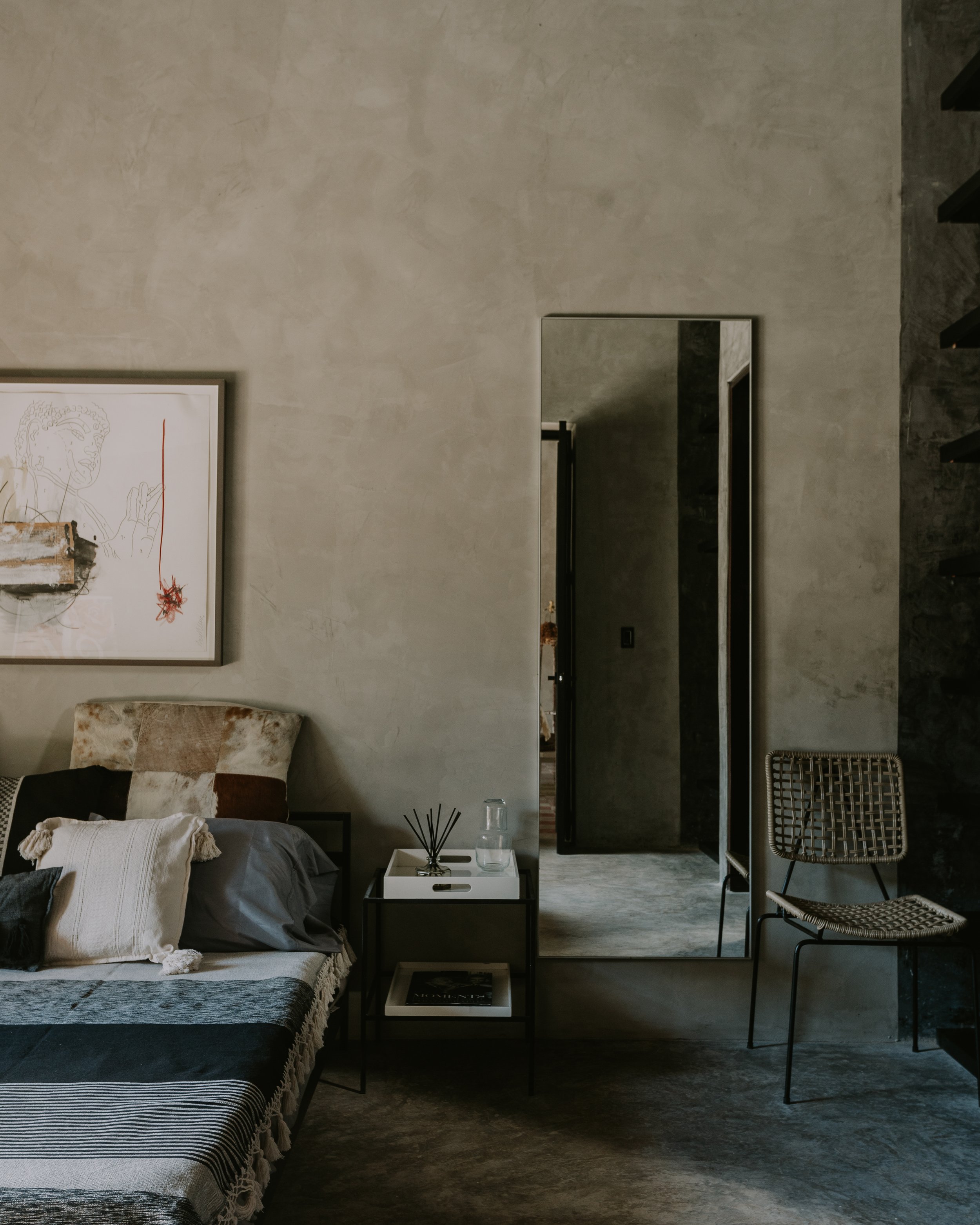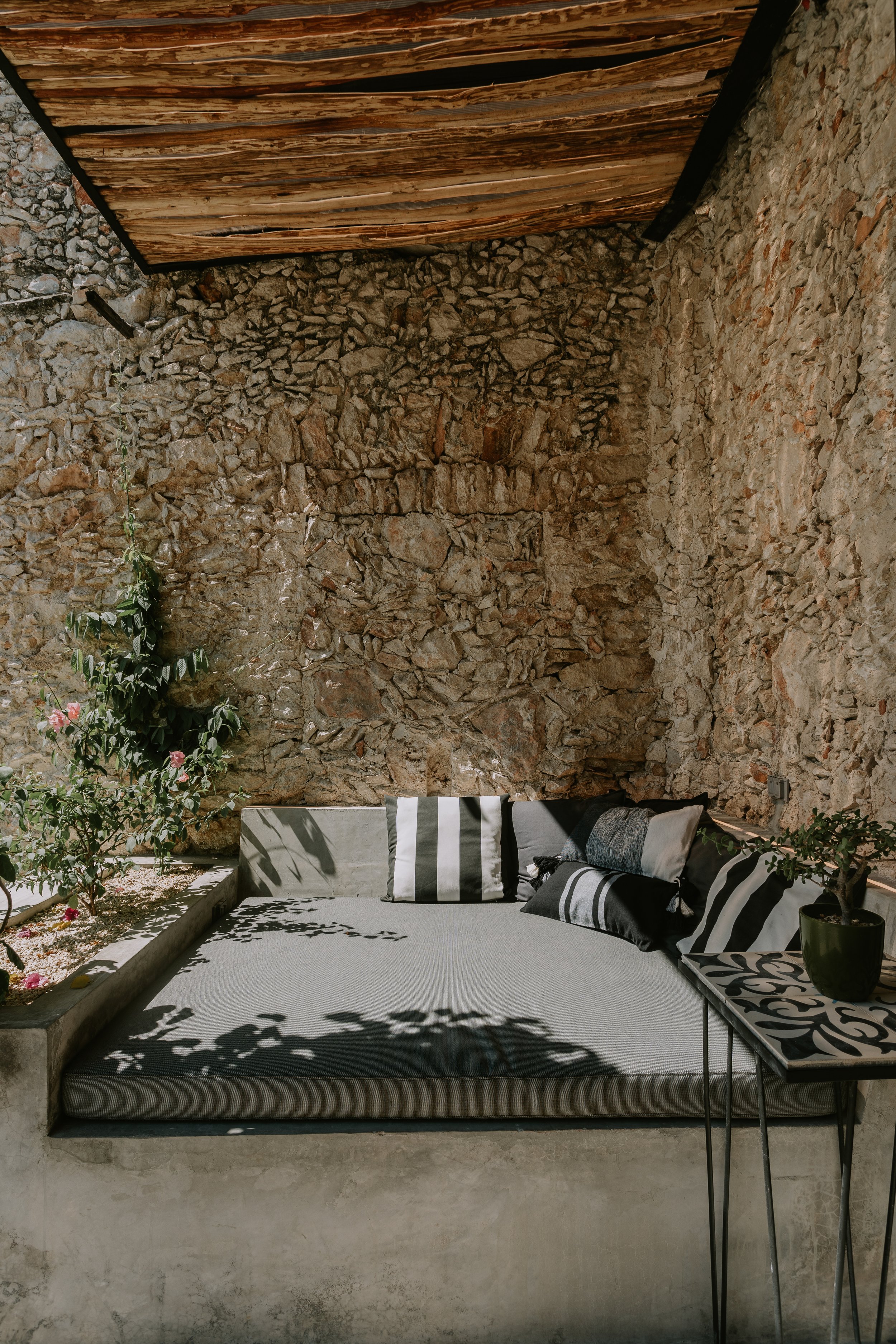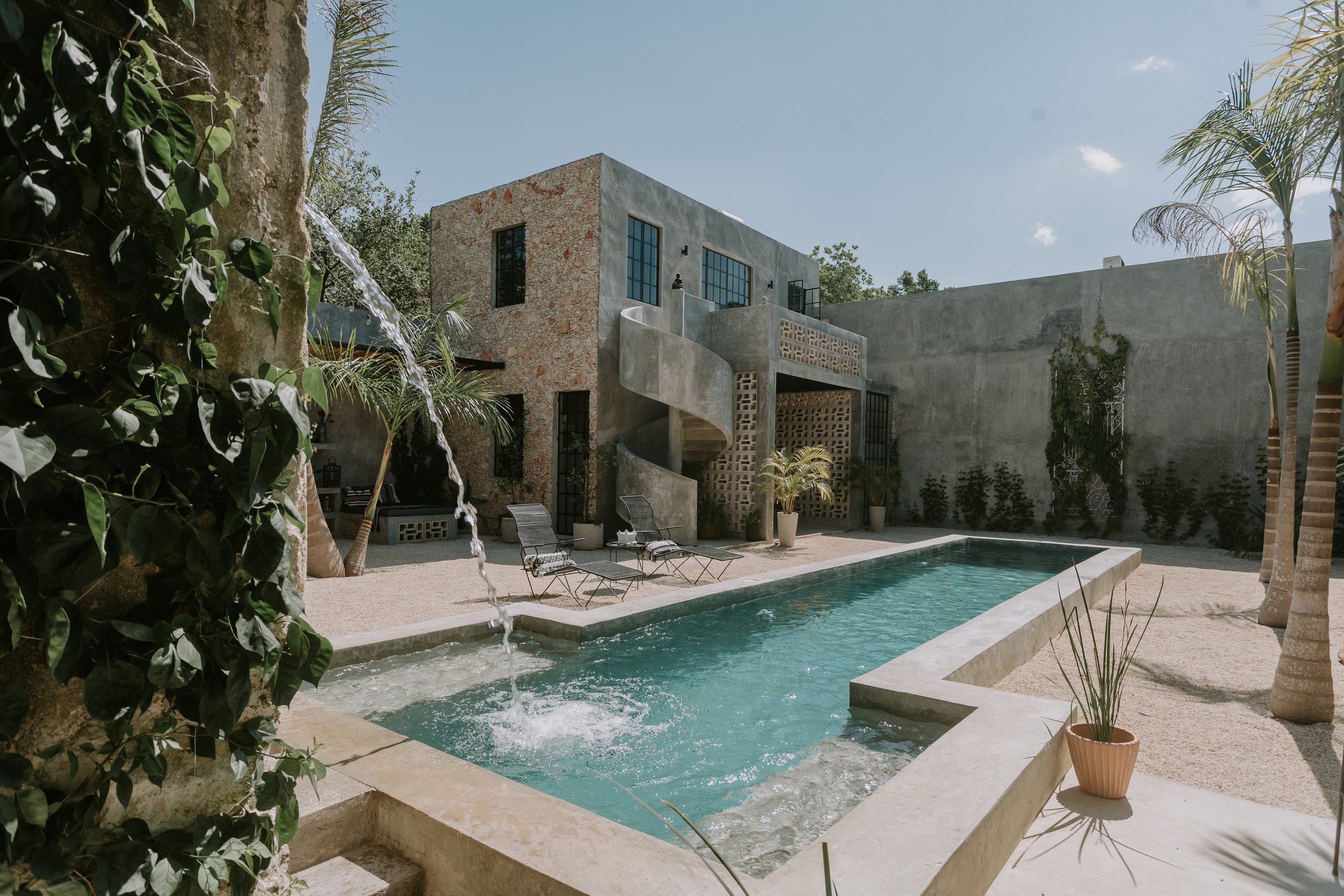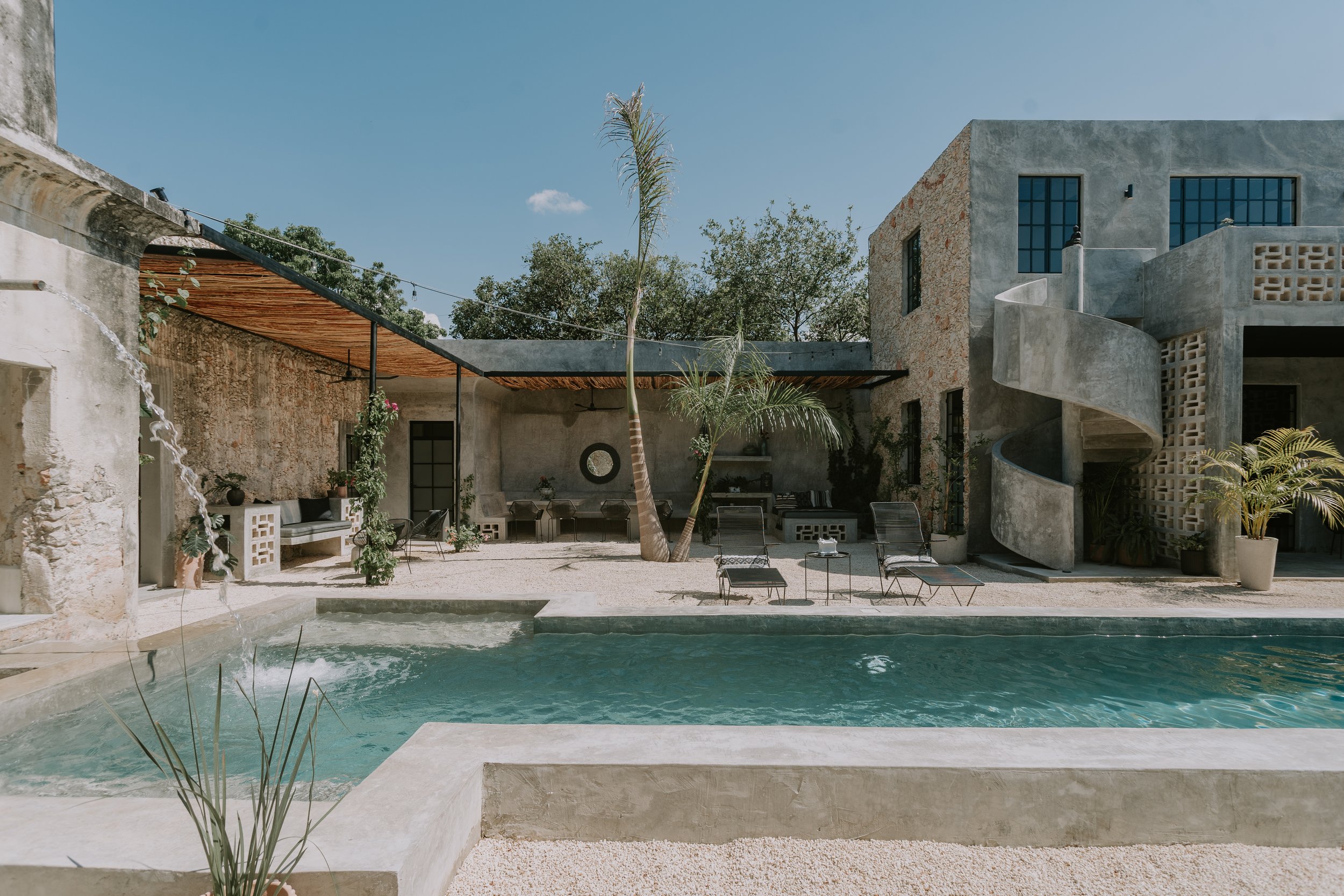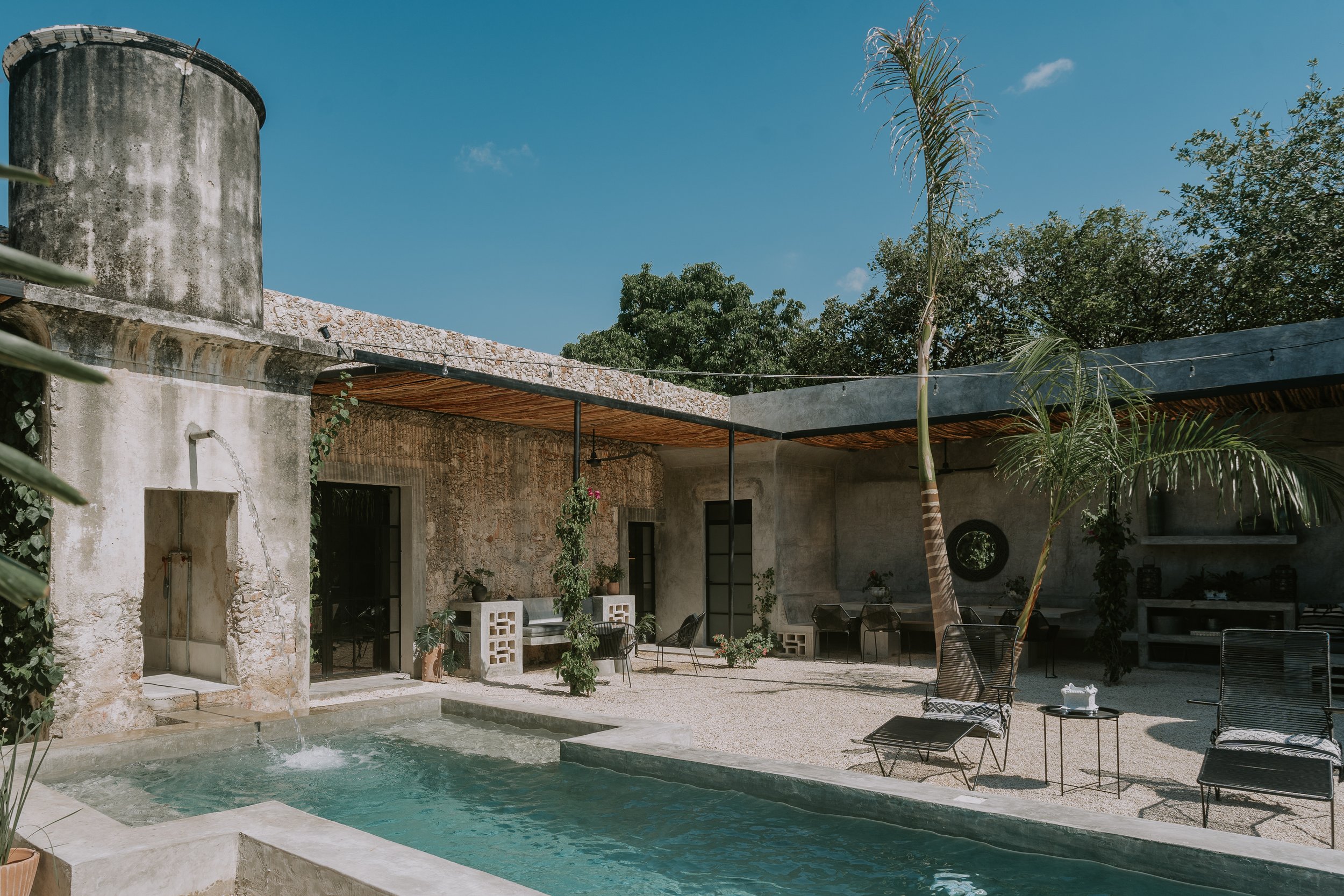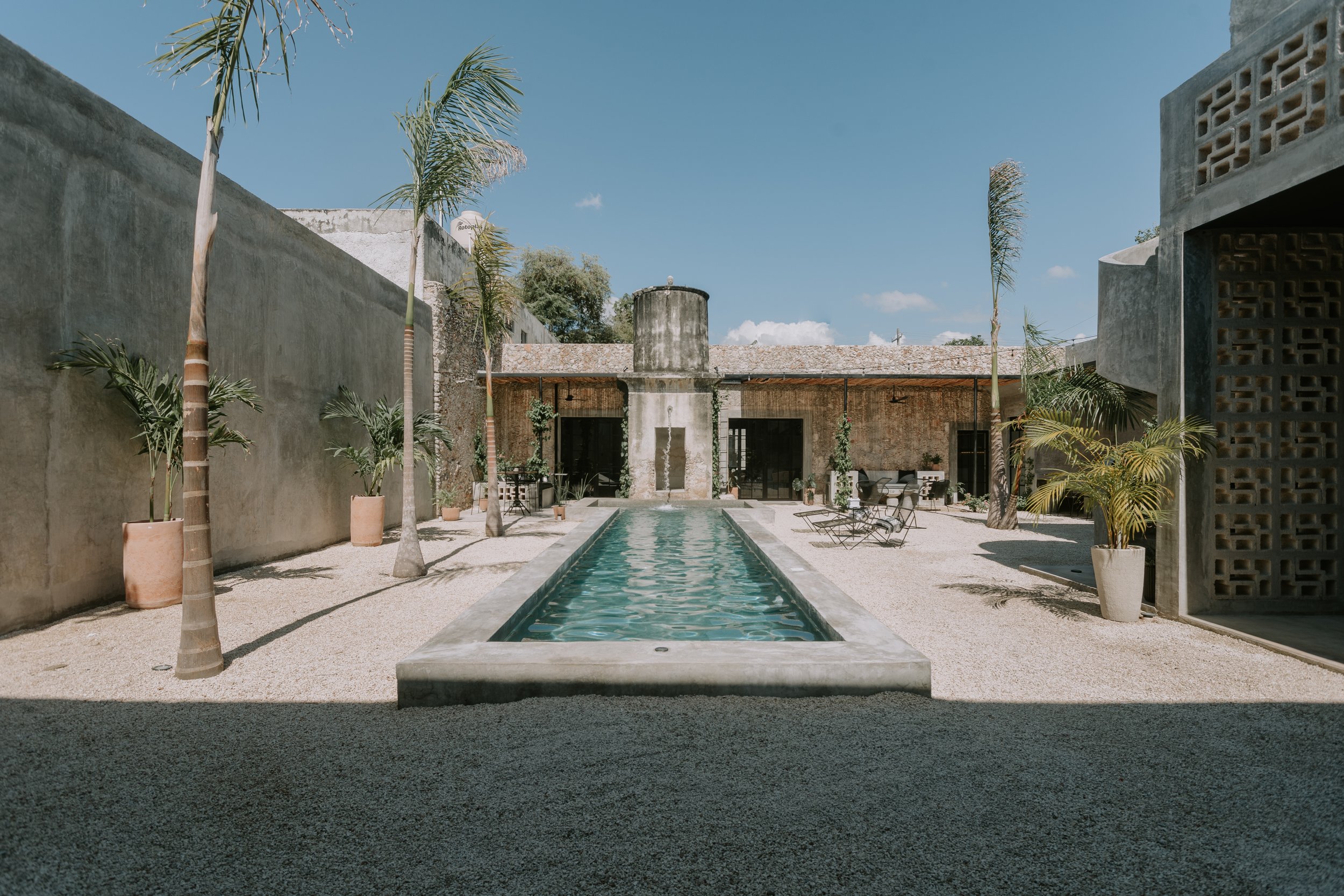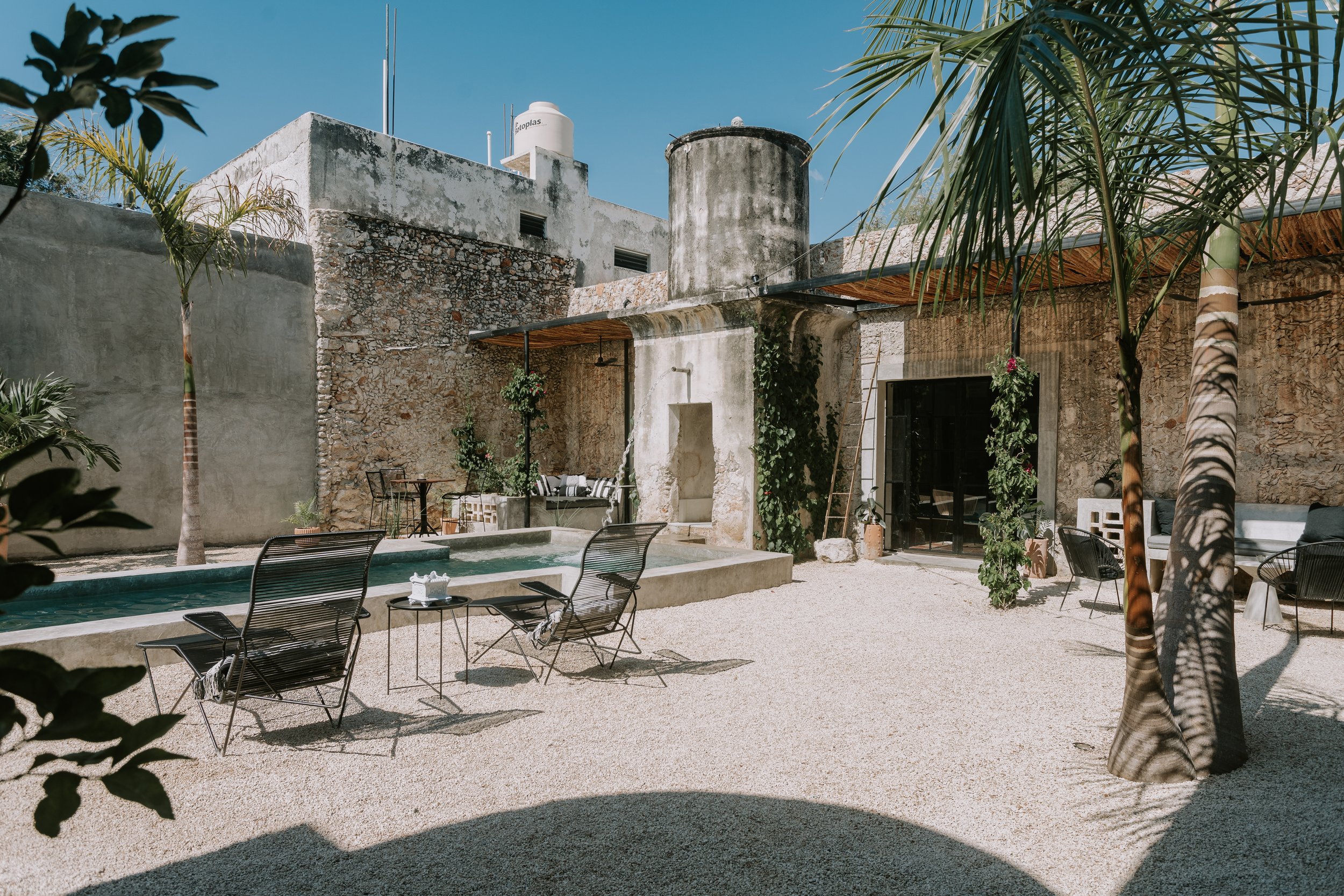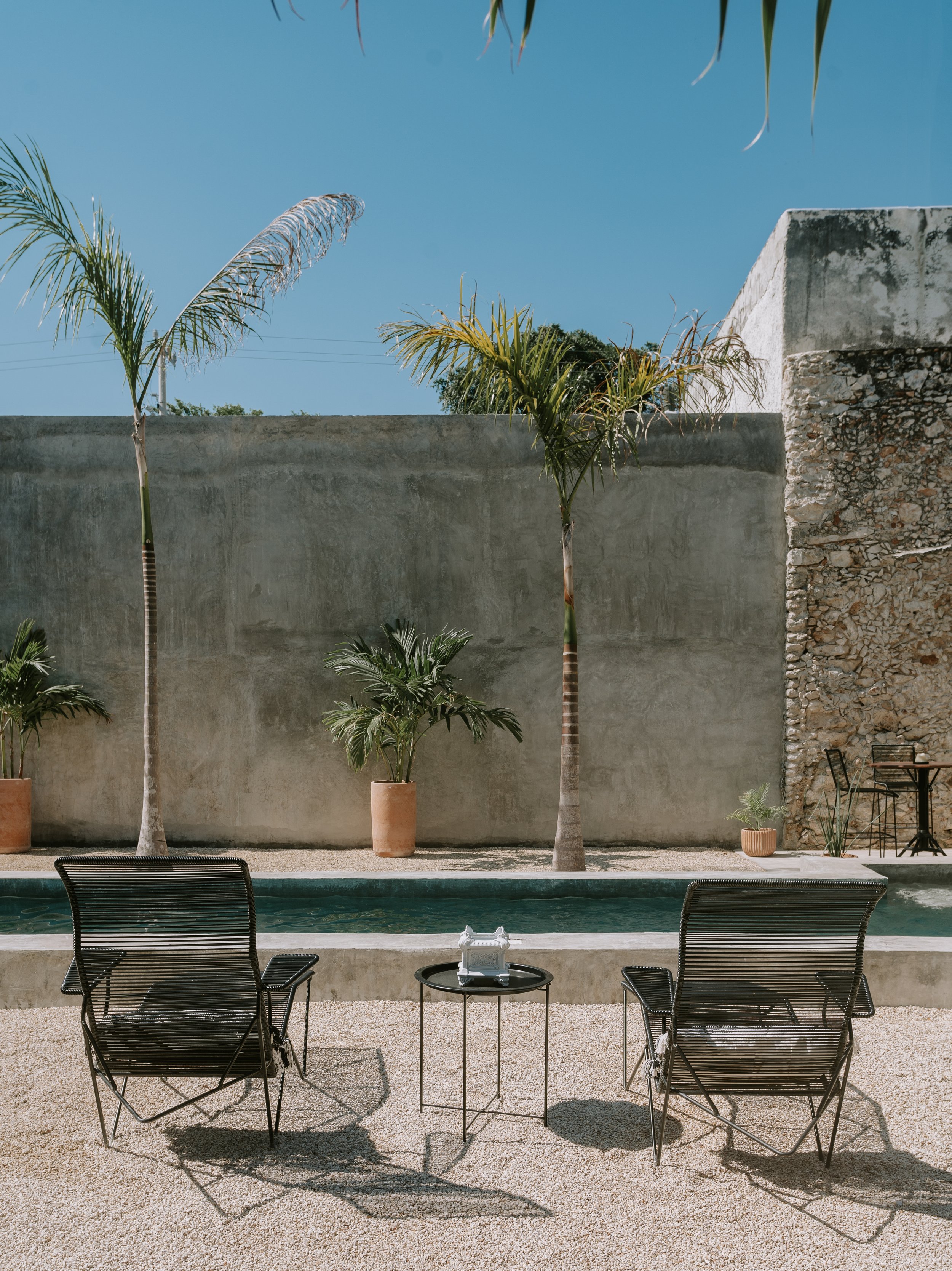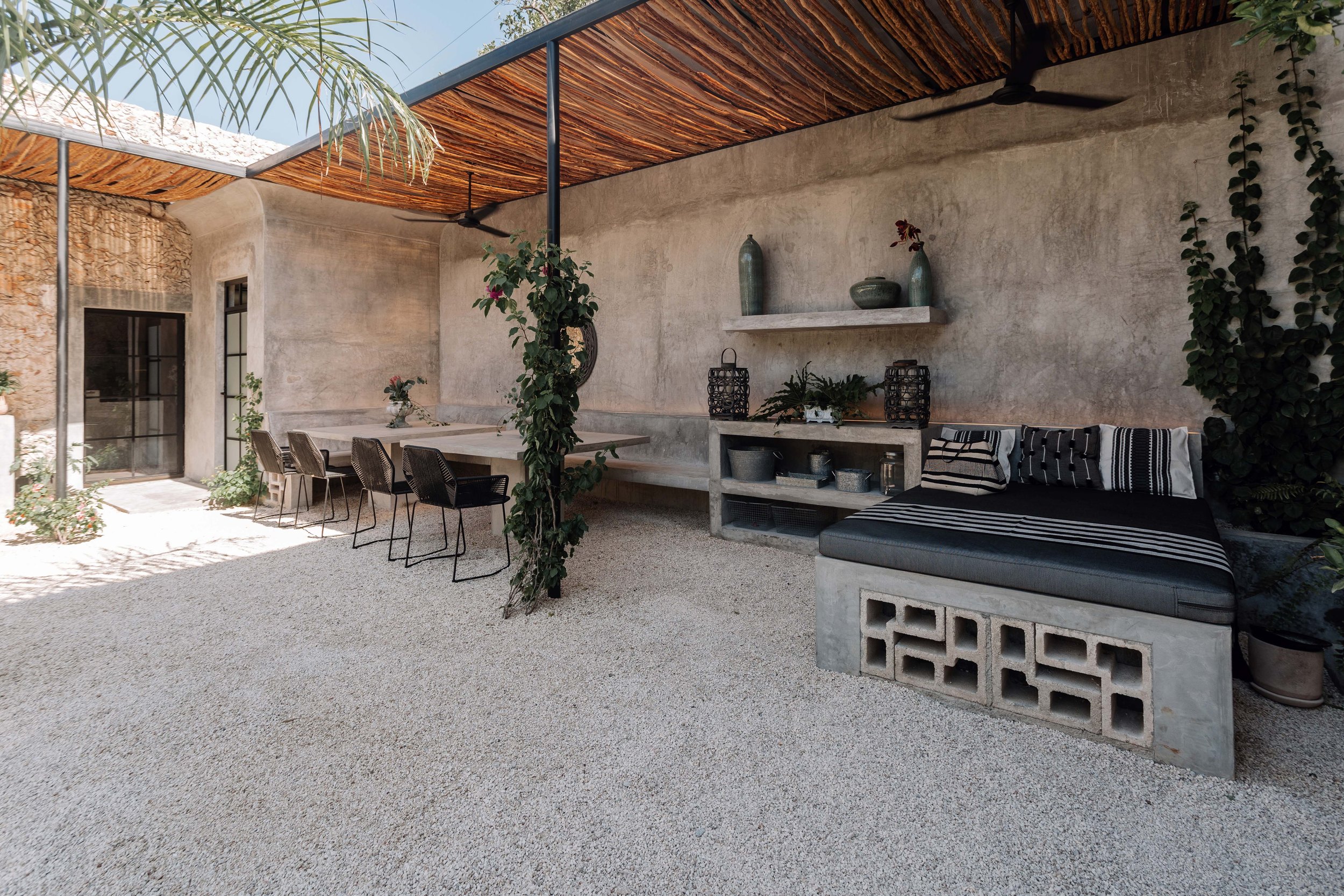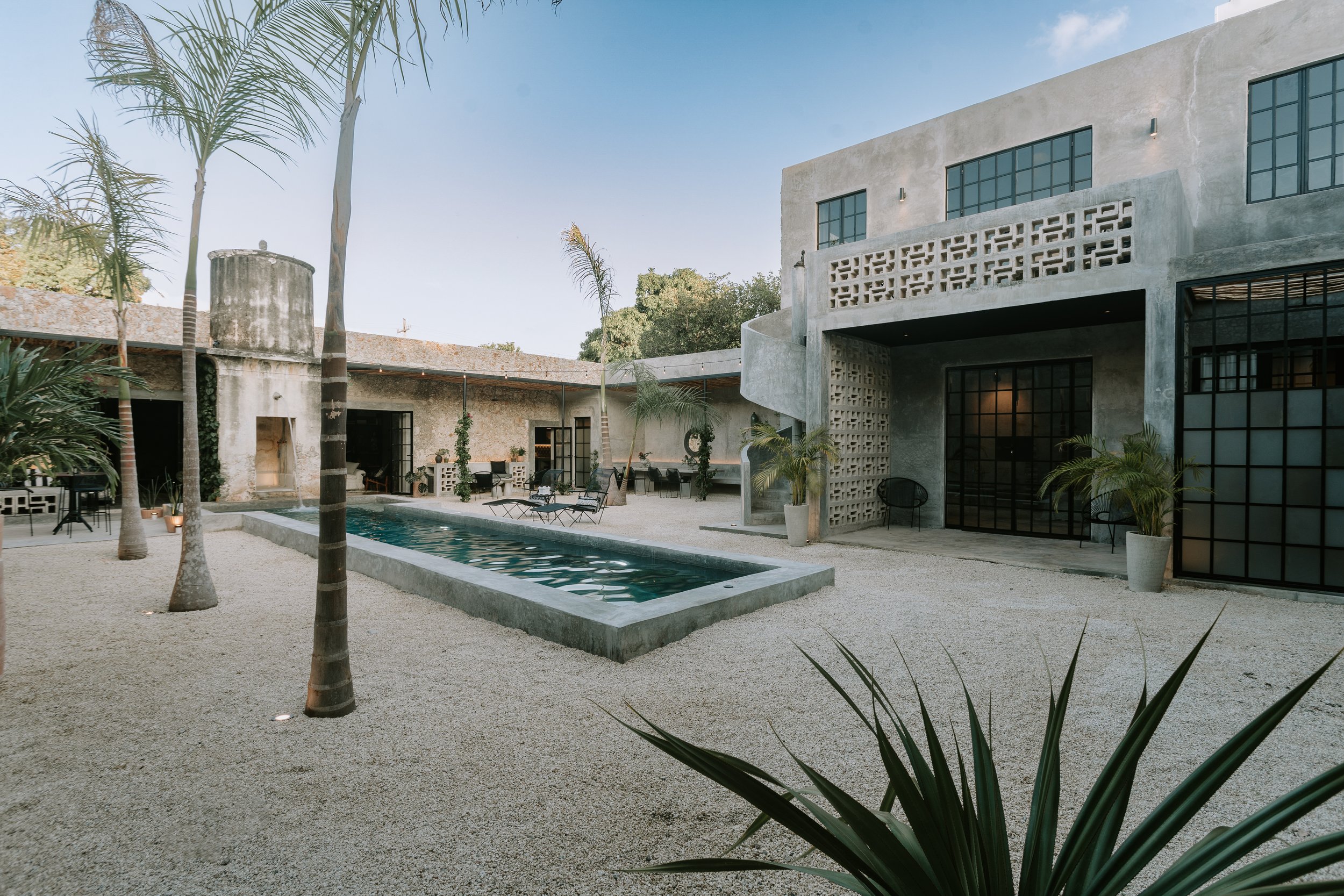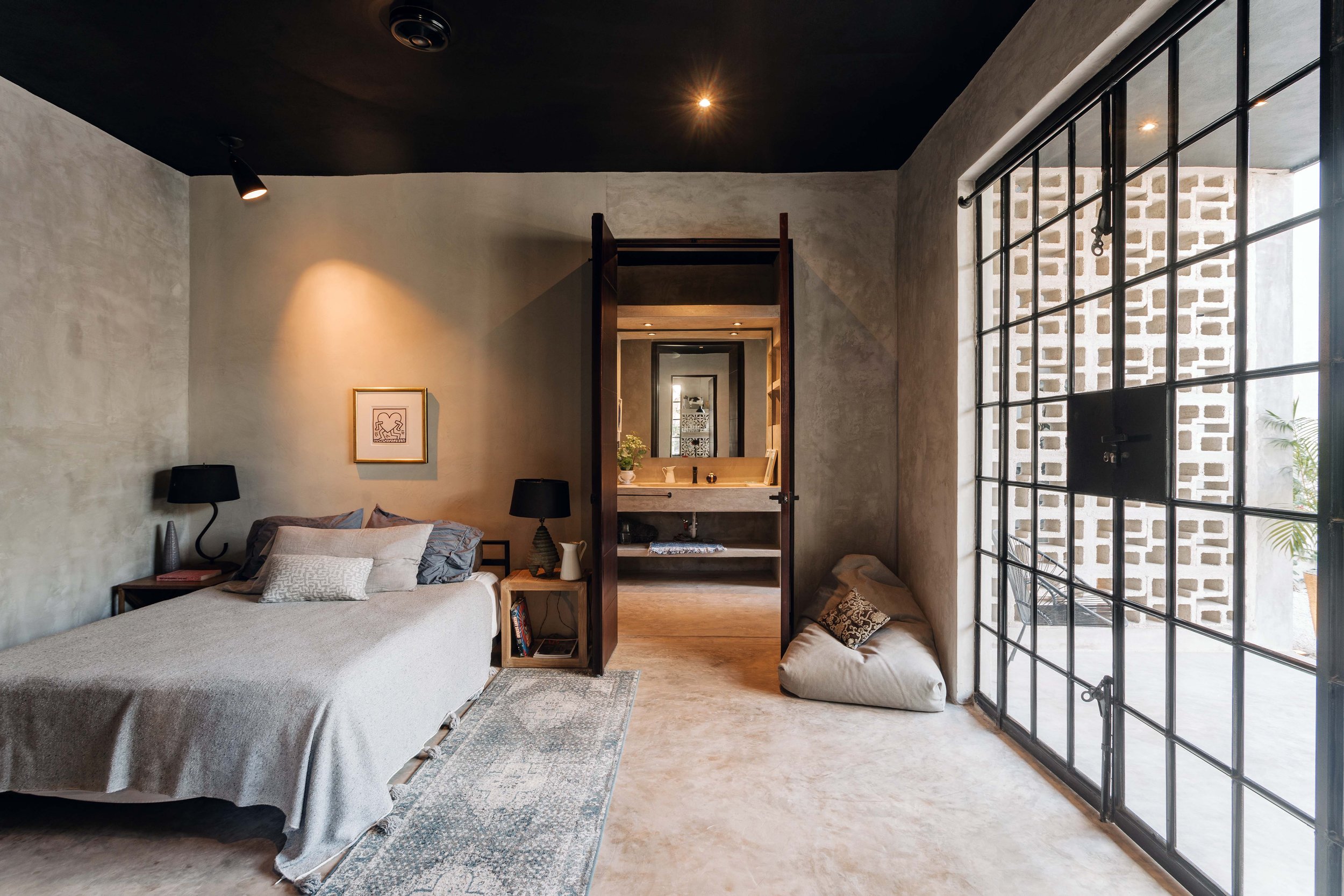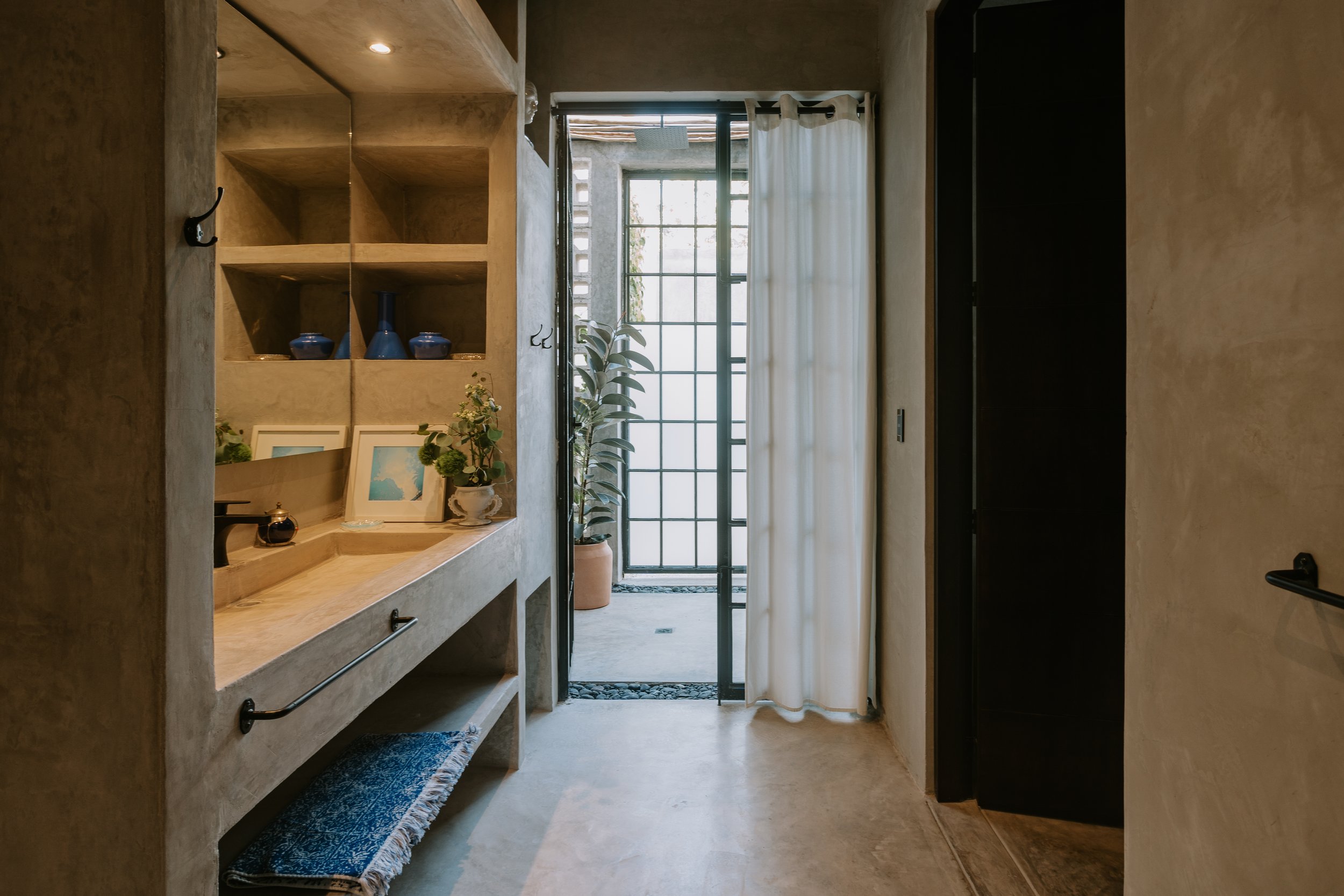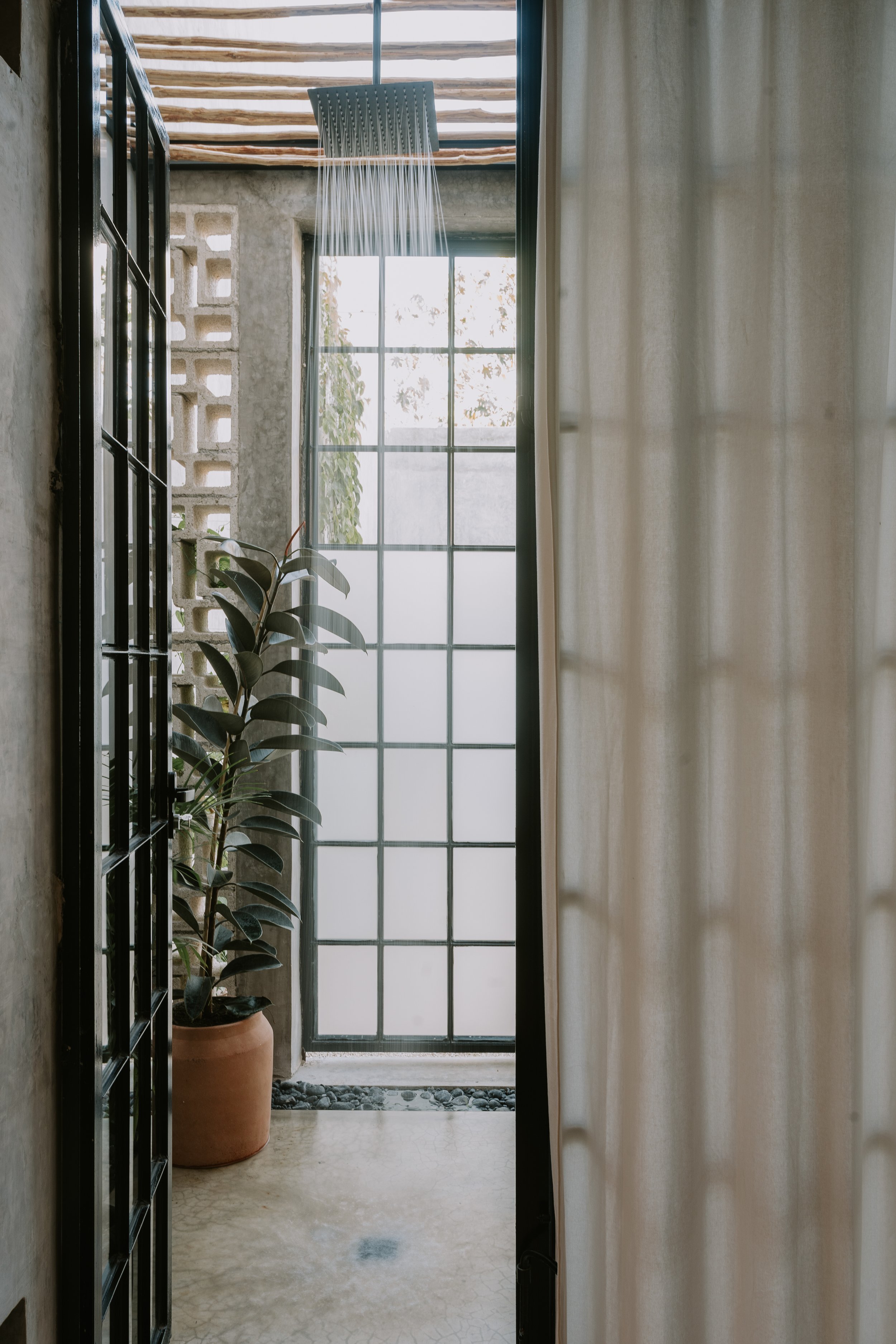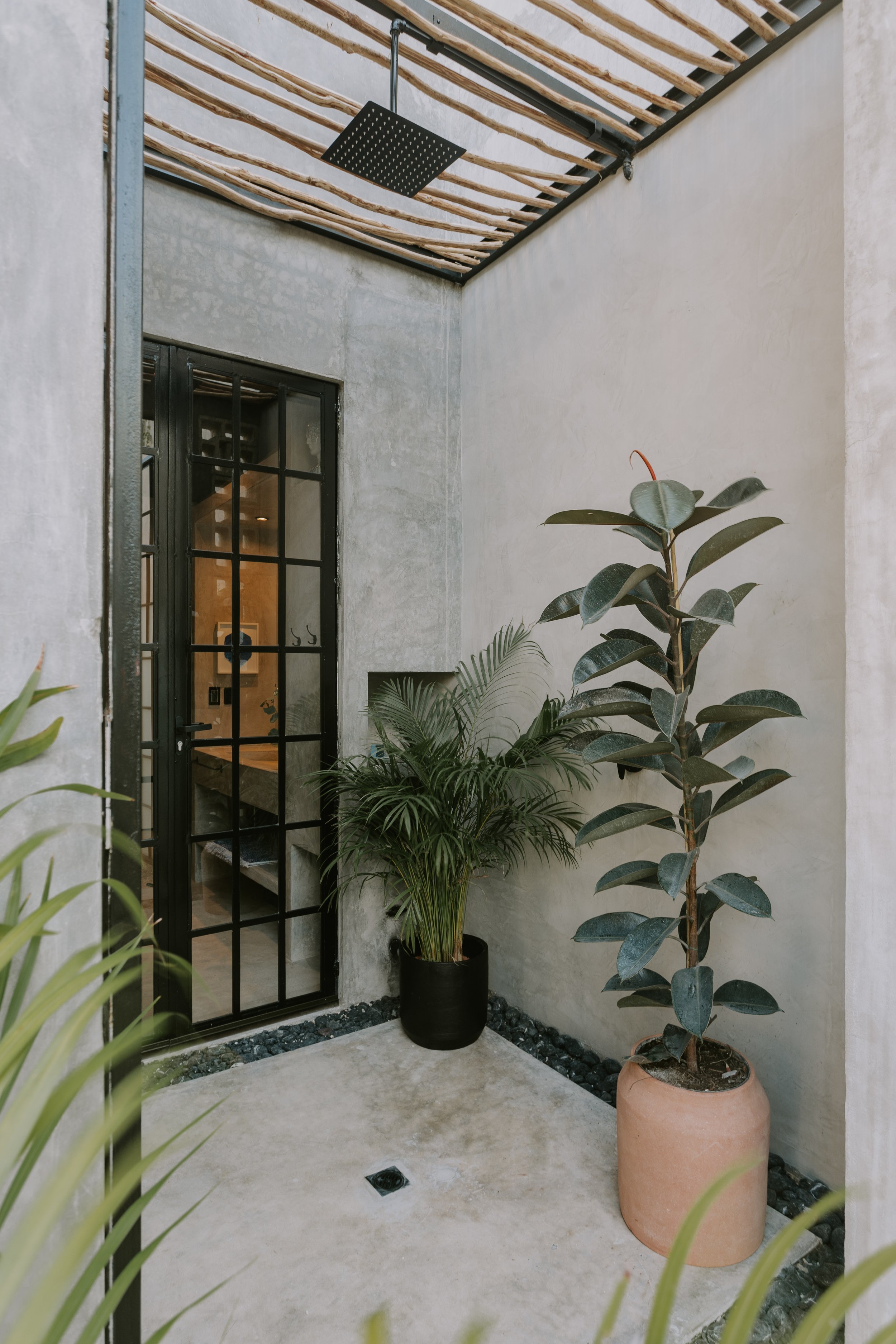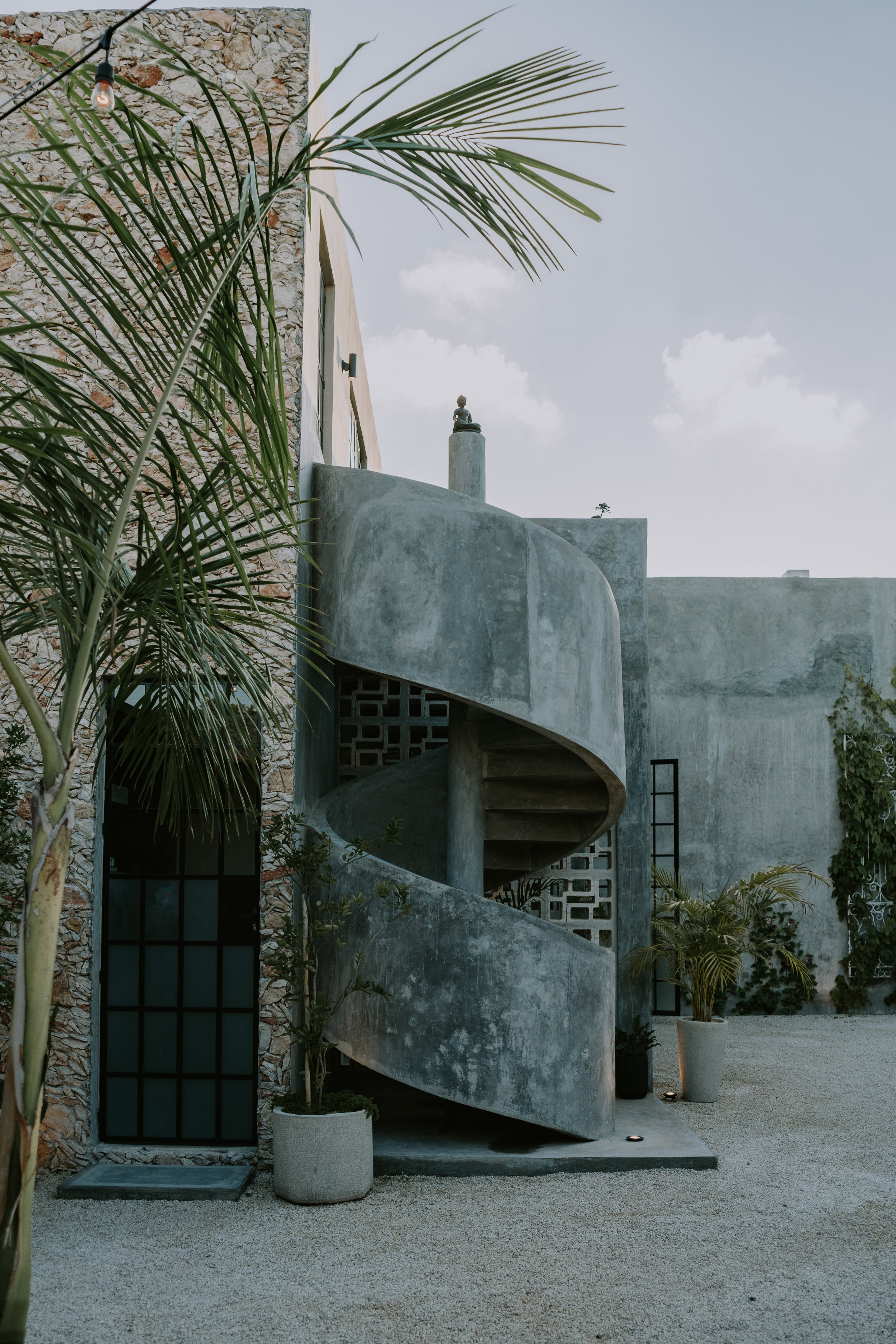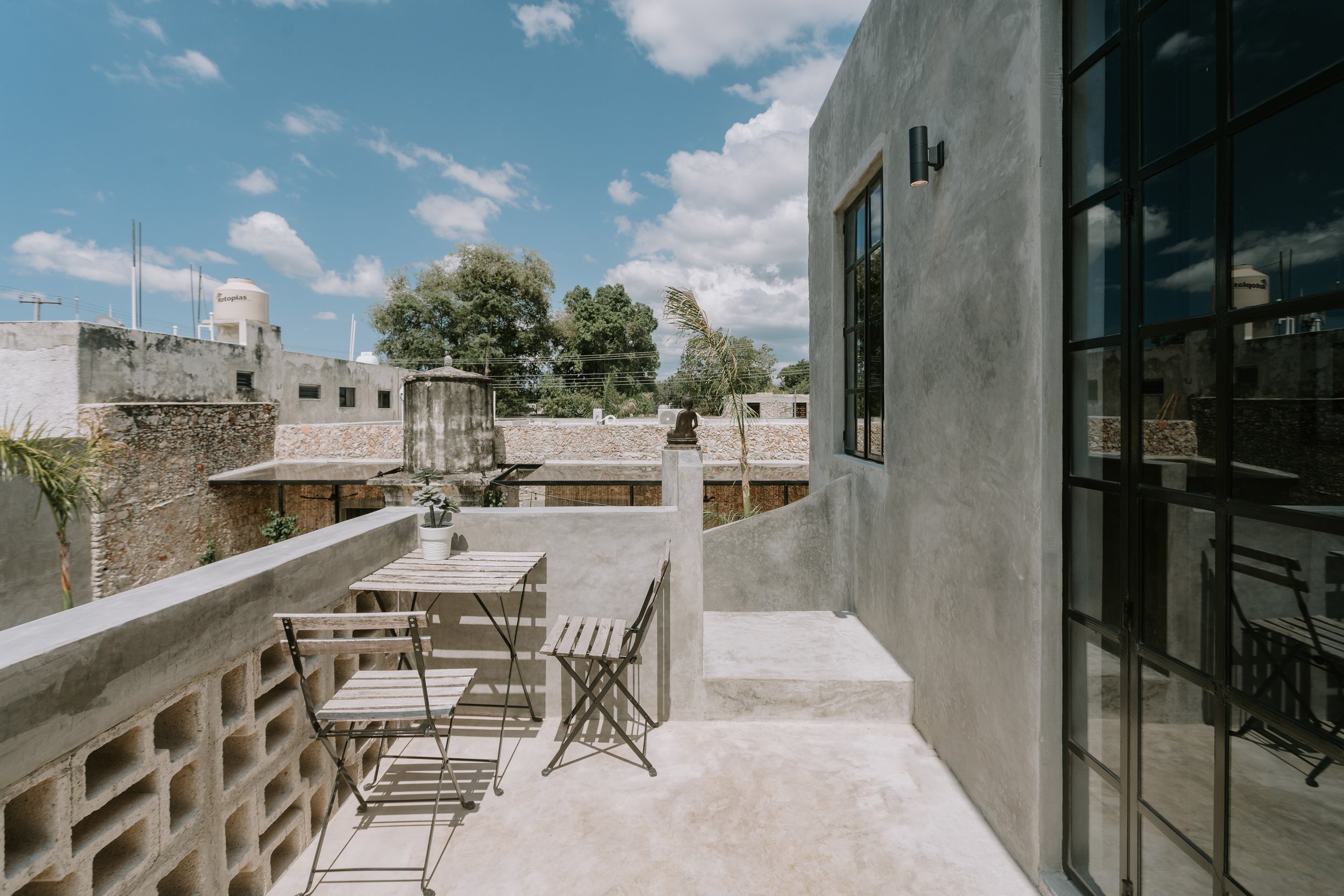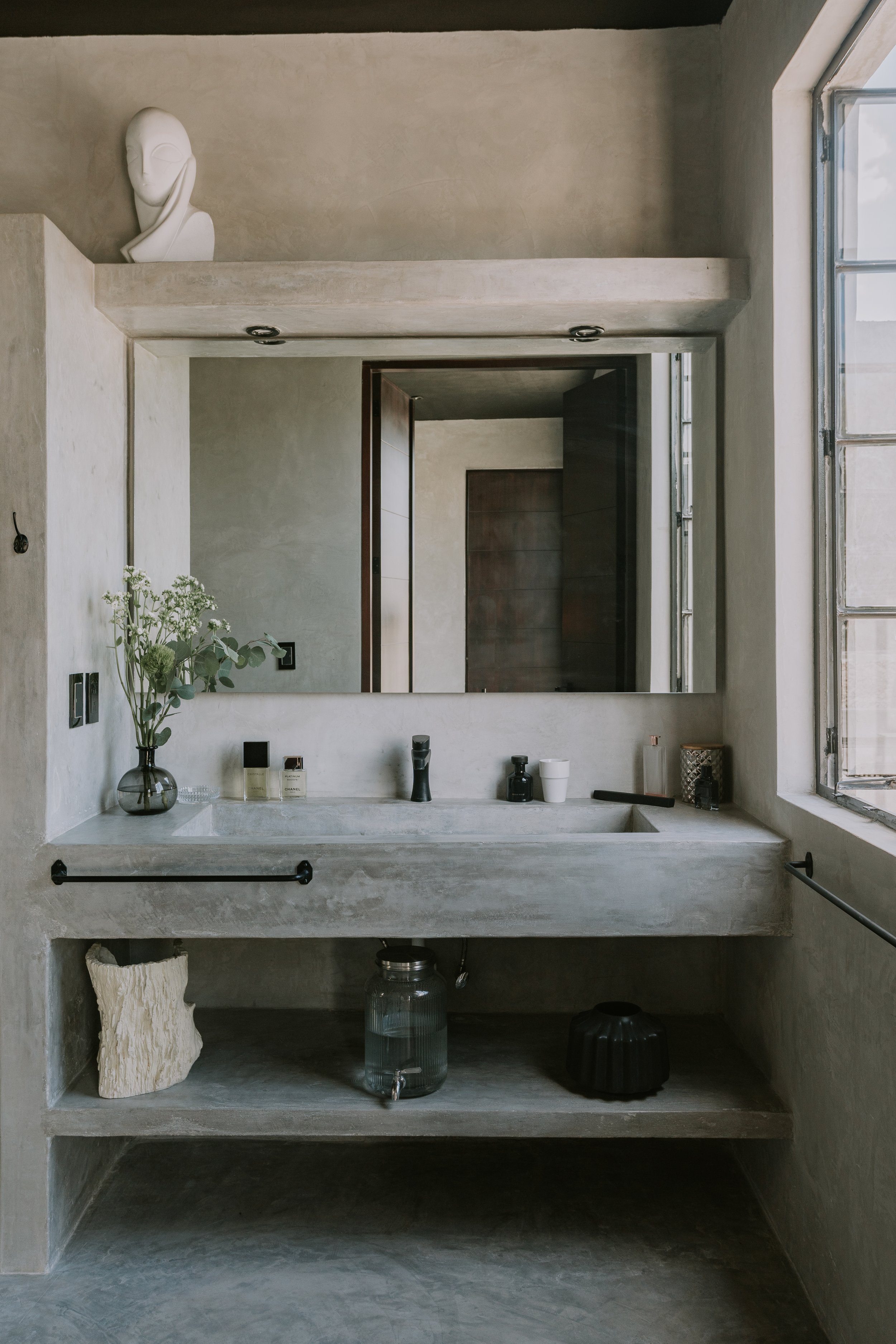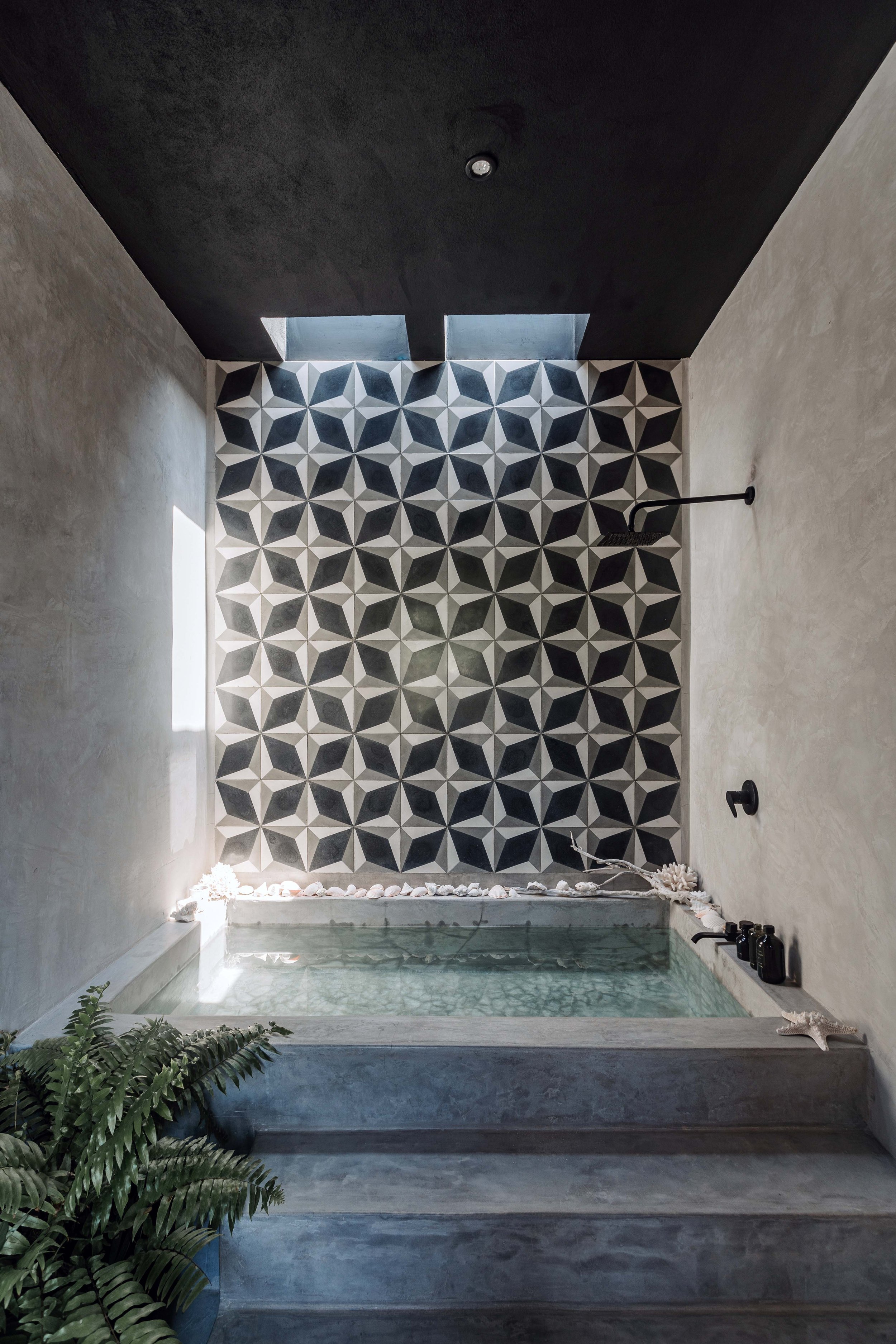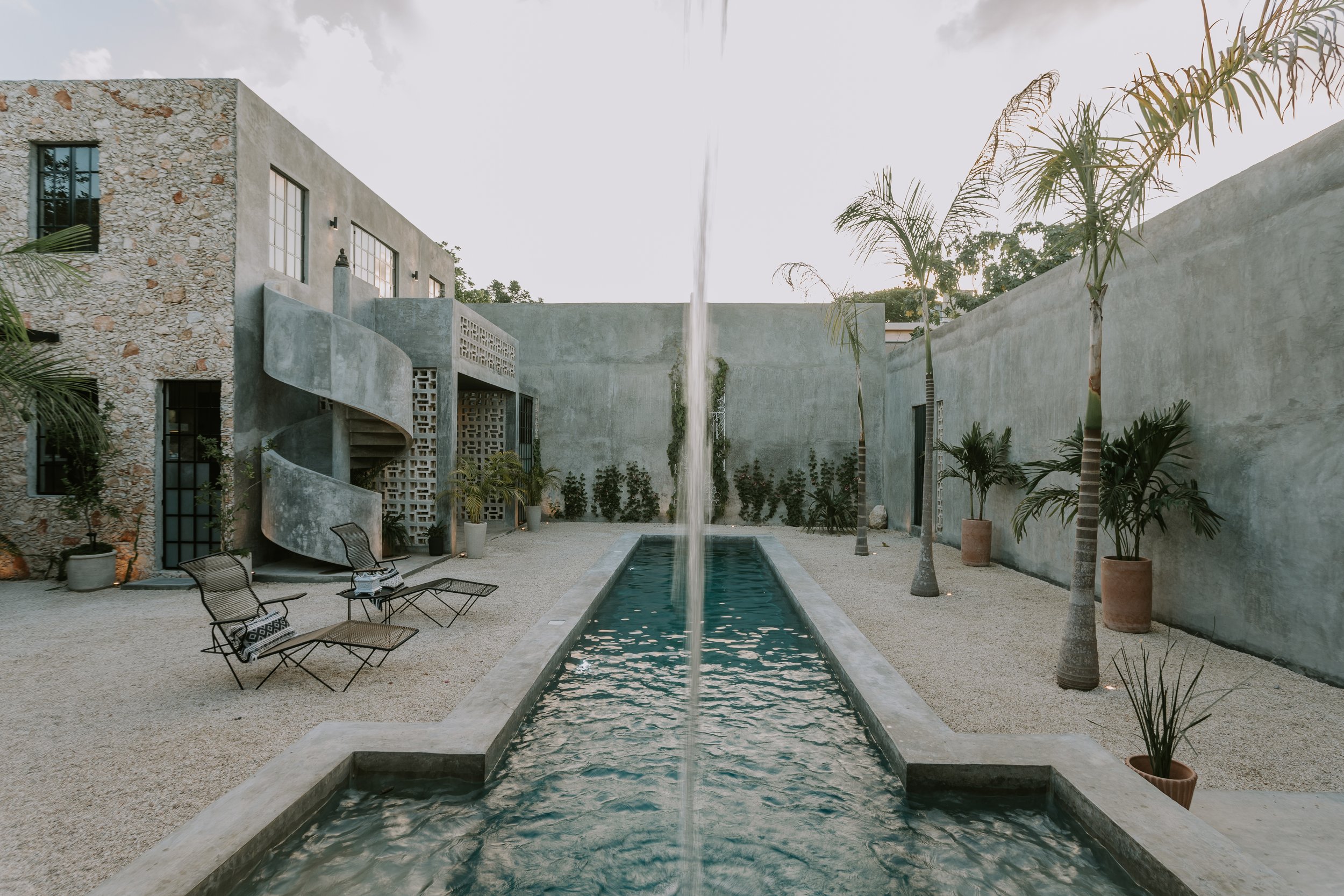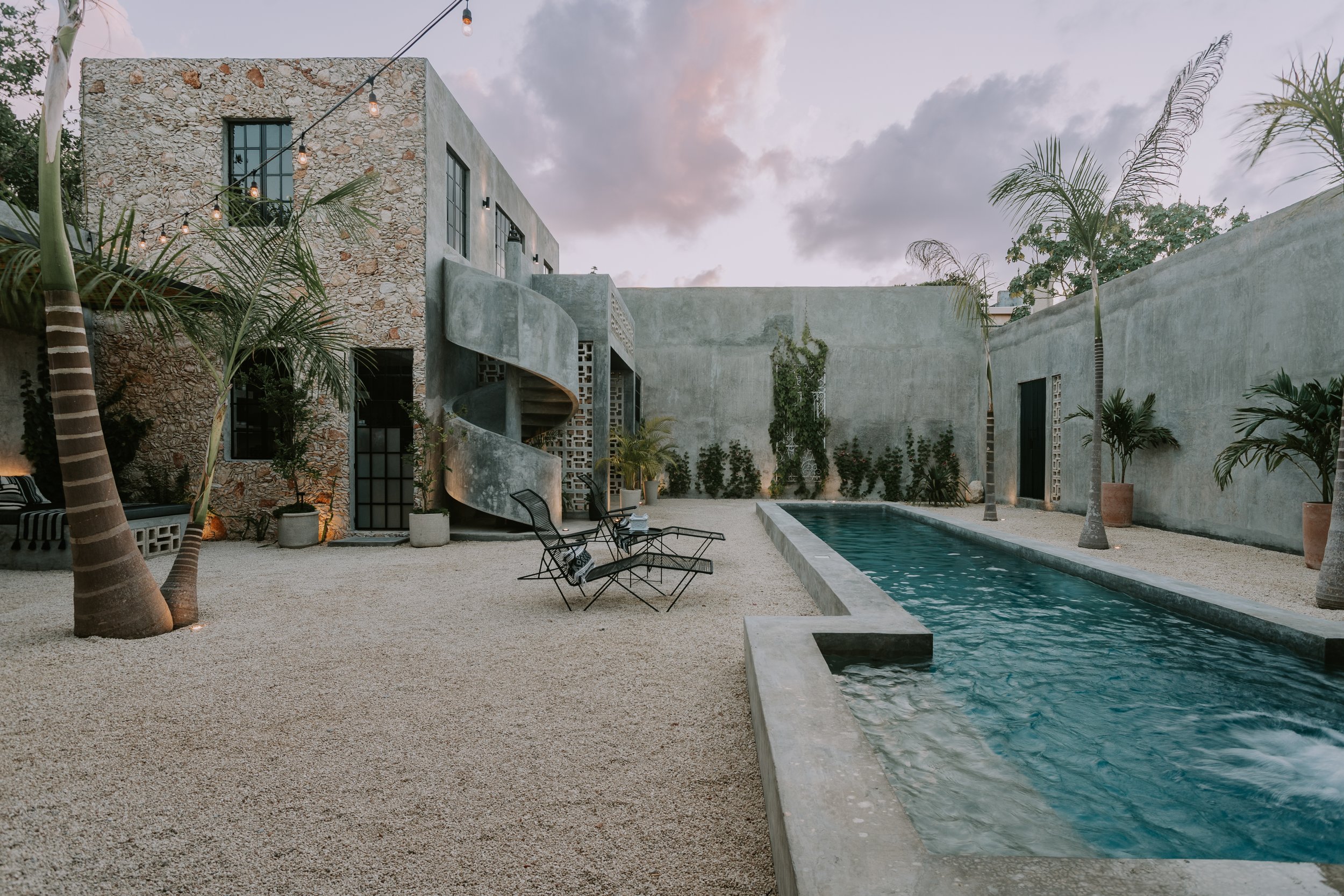HOLA, CASA CISTERNA!
Artist TREY SPEEGLE and architect ERIK GONZÁLEZ fill in LEE STEELE on the brief that guided this brutalist retreat in the Jesús Carranza area of Merida, Mexico.
EVEN WHEN IT WAS half-finished, Casa Cisterna was cool and compelling enough to be considered ready for showtime.
It was still under construction when a popular Mexican YouTube channel, Cotaparedes Arquitectos, invited its Mérida architect, Erik González of González Estudio, to give a video tour of the house. It garnered 72,000 views in a year.
Cisterna is a part-time abode and income property for Trey Speegle, a New York artist and art director who joined Yucatán Maga- zine after being approached about featuring his new home in a spread.
In Trey’s words, the home rose over an “amazing property” in the often-overlooked Jesús Carranza neighborhood, bordered by Itzimná to the north and by La Plancha to the south.
What makes this lot amazing is both its size and its configuration. It’s over 50 feet wide on the main entrance side and 100 feet deep, with a separate street entrance around the corner. That’s where a 30-by-40-foot “bonus lot” ices the cake.
The original facade in 2021
The house was remodeled with a new façade, courtyard, and parking area. Out back, behind an 11-meter lap pool, is a guest casita that has three bedrooms, two baths, and its own compact kitchen. Breeze blocks on the casita terrace are actually corner cinder blocks turned sideways and painted dark gray. Cisterna’s wow moment appears in the form of a wide concrete spiral staircase which anchors the exterior and resembles a swirling ribbon alongside a pretty gift box.
The courtyard’s other showpiece is a refashioned cistern that recirculates water into the pool. The concept is not new, but the execution is extravagant. The cistern foun- tain offsets the chukum and stone archi- tectural elements, perched on a pedestal that contains the waterworks, a structure roughly the size of the water tank itself.
“The existing cistern was the main feature that we decided to highlight from the beginning. By drawing the pool from that starting point, we were able to divide the garden/terrace into a private smaller space for Trey’s bedroom and a larger social area that connects to the living room and kitchen, perfect for large gatherings. The round con- crete staircase references the water tower in shape and took one month to make by hand,” says Erik.
Trey and Erik worked on the layout and design for two years, and Erik remembers their agreed-upon philosophy.
“Casa Cisterna was a project where past and present were very important to our vision. Through references to the existing house, we brought elements of traditional Yucatecan architecture to the façade like mampostería, celosias, and concrete to suit Trey’s aesthetic needs and our vision for a contemporary house in a traditional Mérida neighborhood like Jesús Carranza,” says Erik. “The existing pasta tiles were rescued and polished to retain the essence of the original house.”
Brutalist architecture was a big influence. Every outside element — from daybeds to tables and benches — is exposed concrete, Erik says.
“All of the walls are polished concrete. Moisture is a problem here with paint, and if the concrete eventually does discolor with moisture, at least it won’t peel like paint. The proportion of the rooms in the original house were so welcoming. The inspiration for the palette and interiors was not just Mexico and the Yucatán, but Mediterranean interiors, Spanish revival in Southern California, Italian villas, all mixed together,” says Trey.
“The guest casita was originally one story and I then asked Erik what would we need to do now if I added on a second floor later. It grew from there. The staircase was added in metal at first then Erik suggested a concrete spiral, which sort of mirrored the water tower.”
At this point, Trey spends part of the year in New York and originally had planned to install cameras so he could monitor activity from long distance. But a better solution presented itself organically.
“I had shipped two Buddhas from New York and one fit perfectly atop the stairs and the other stone one was cemented on the cistern top like a finial. Both now watch over the house and garden.”

